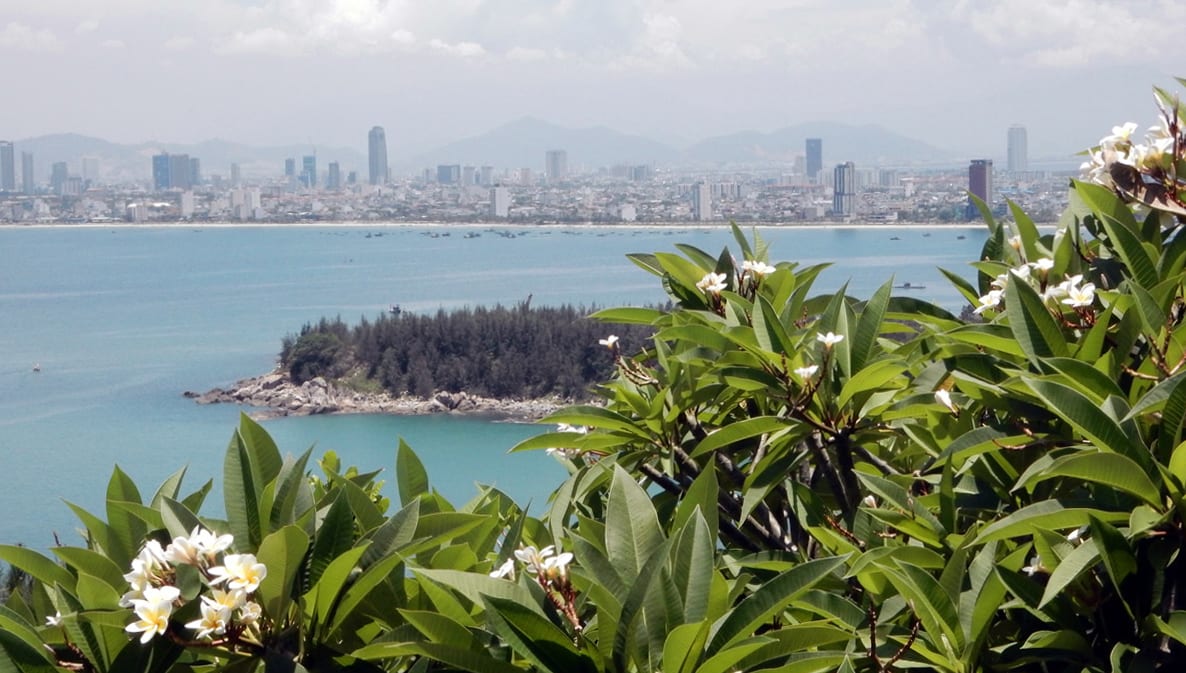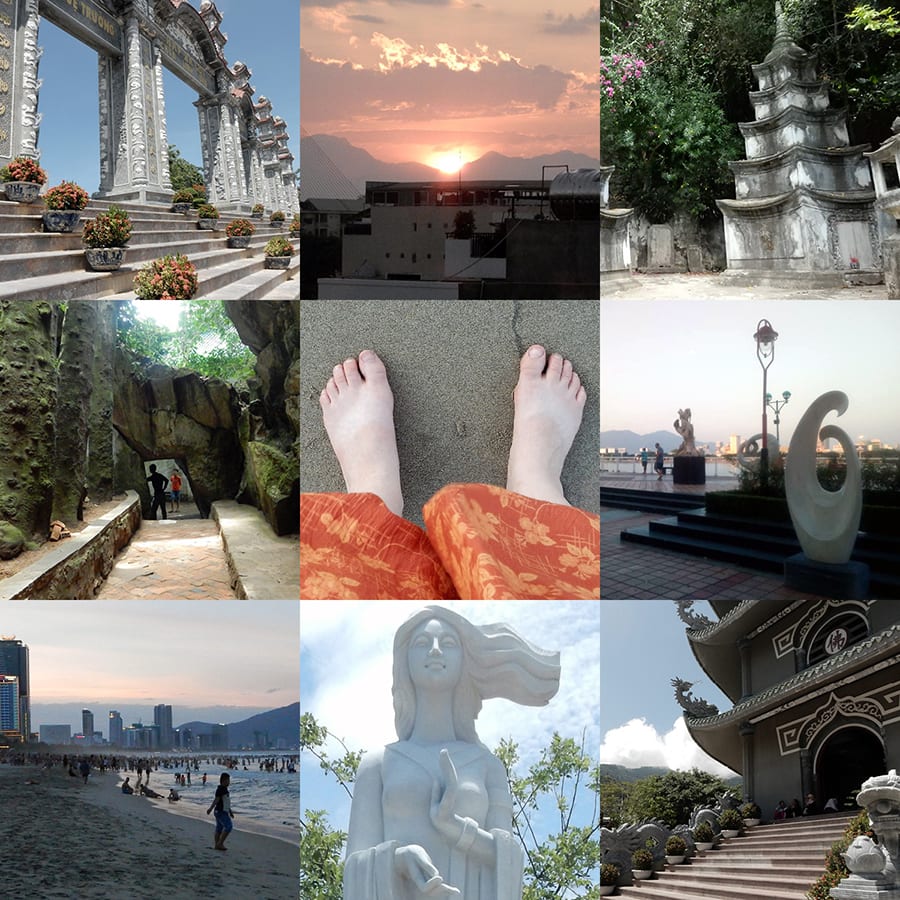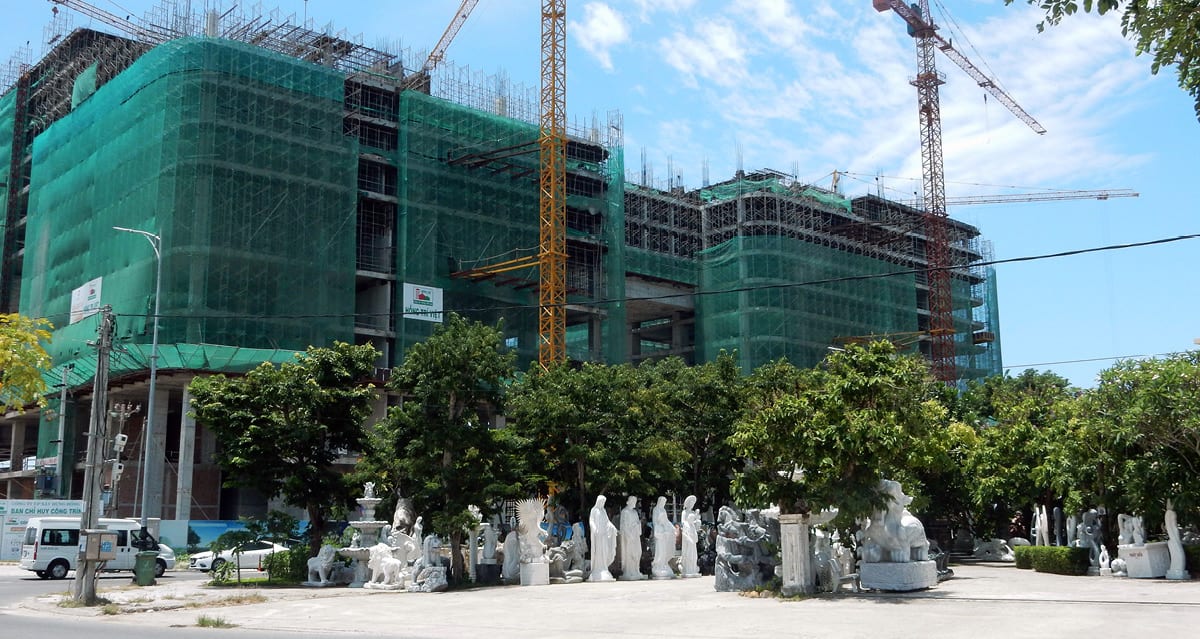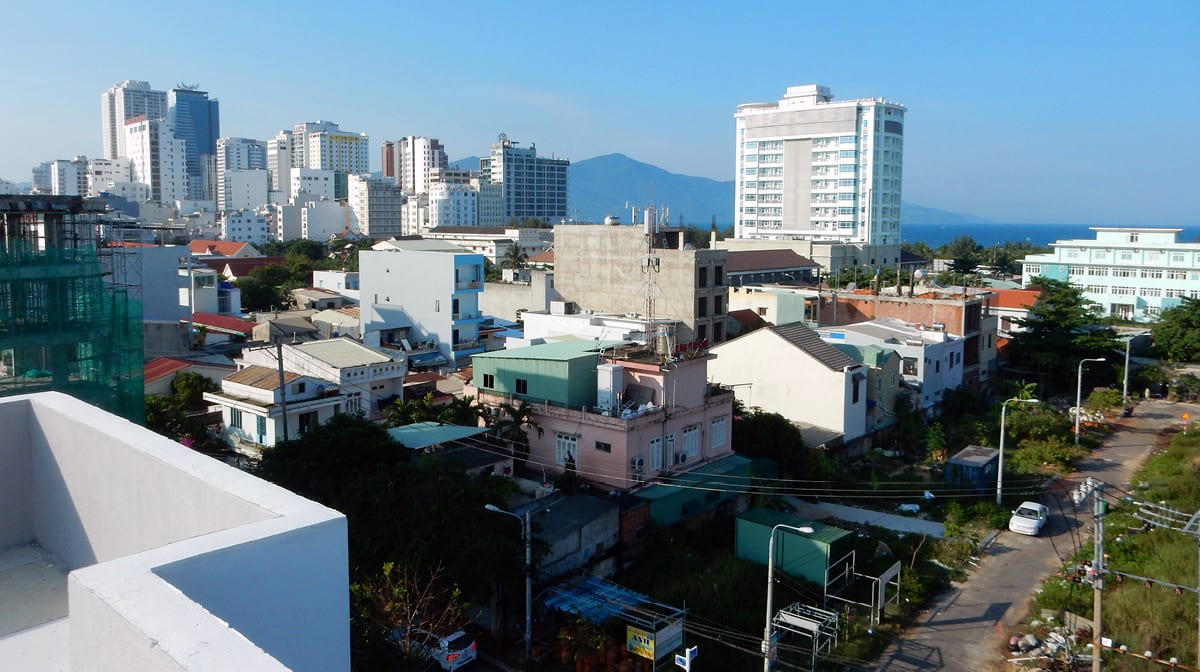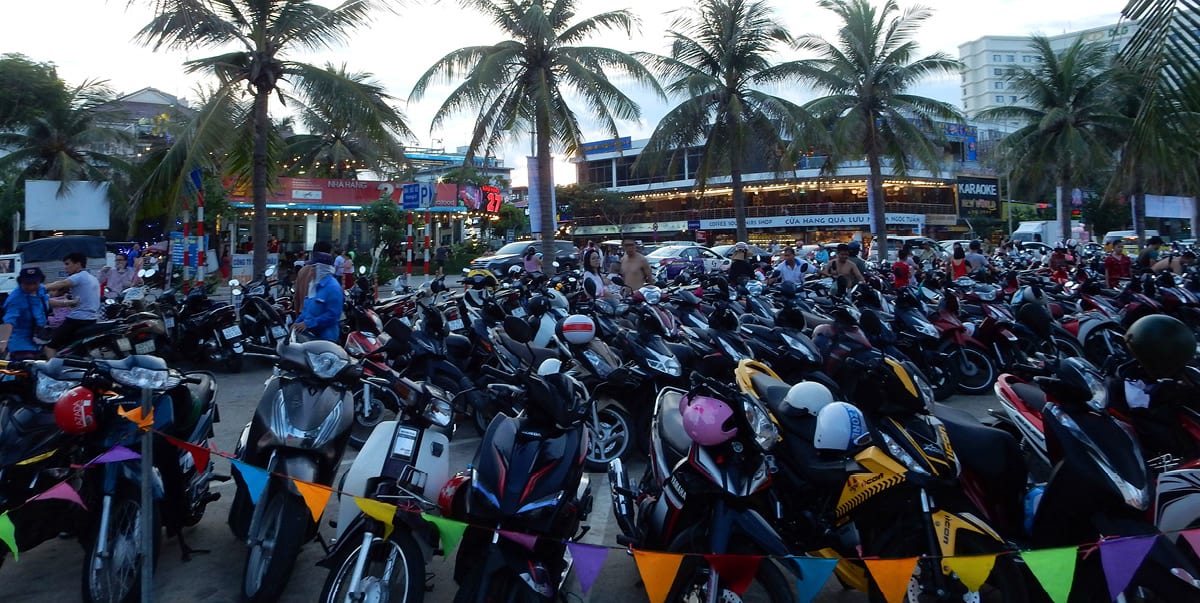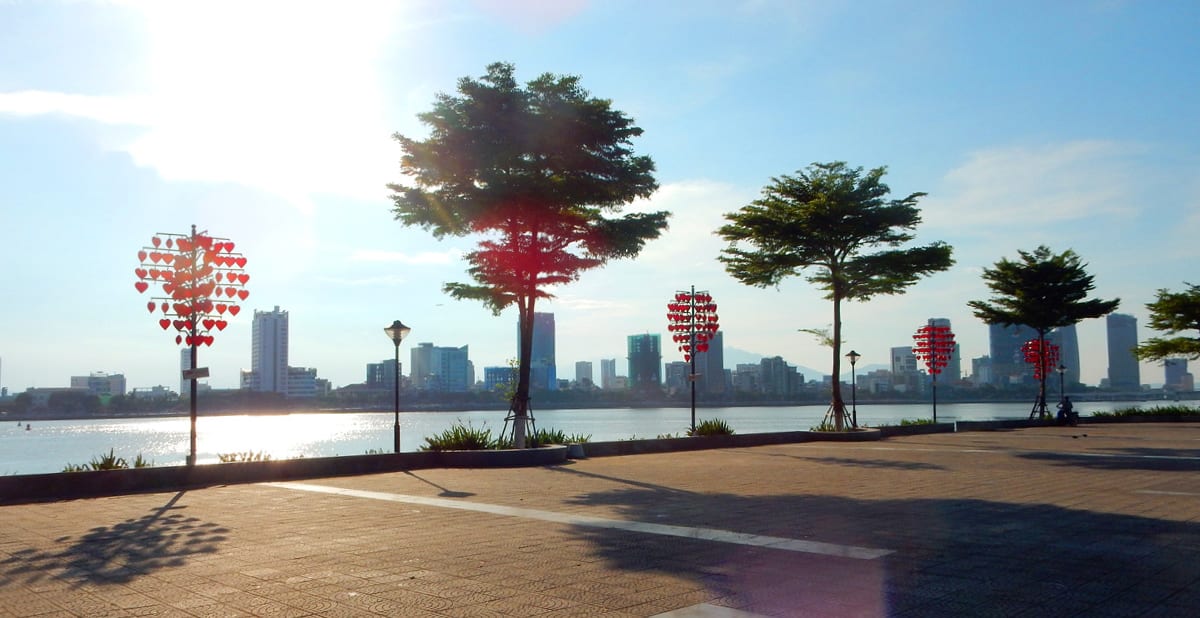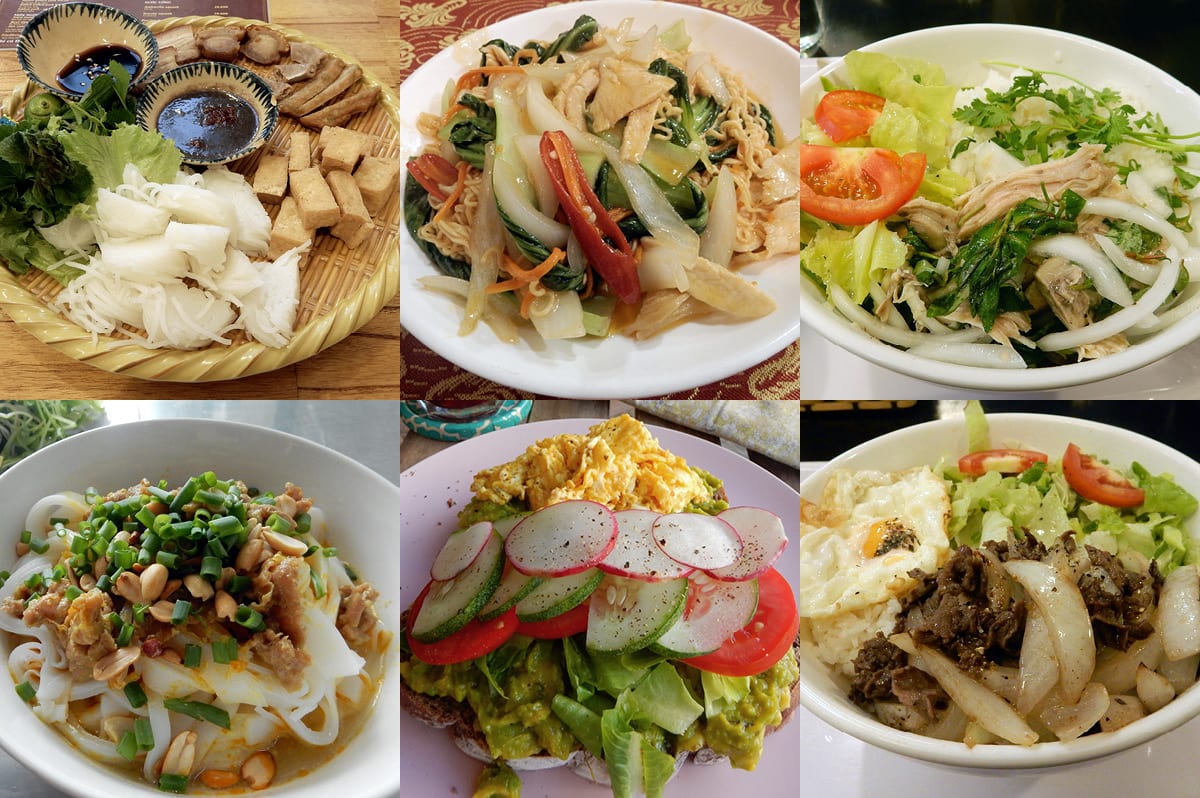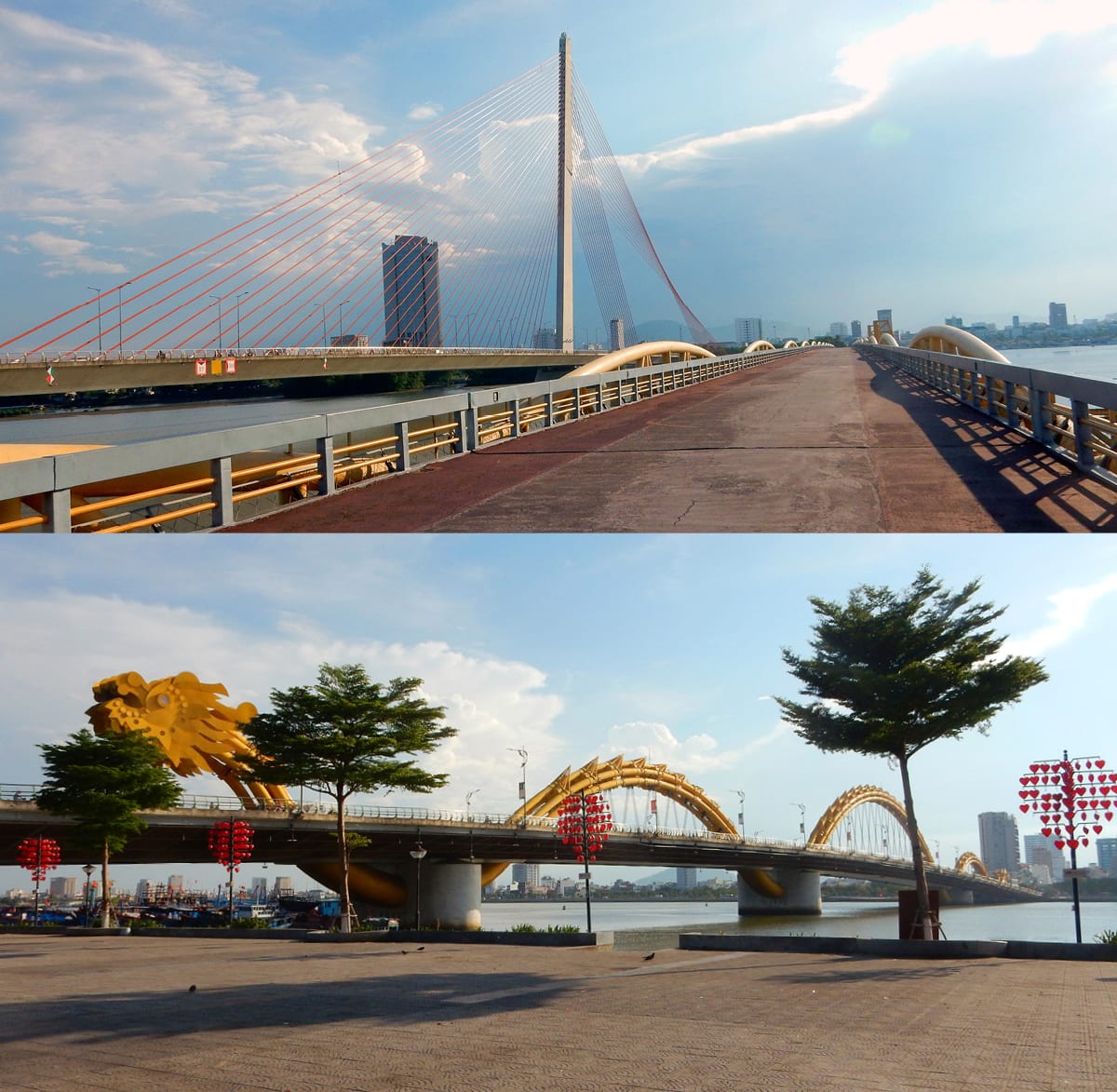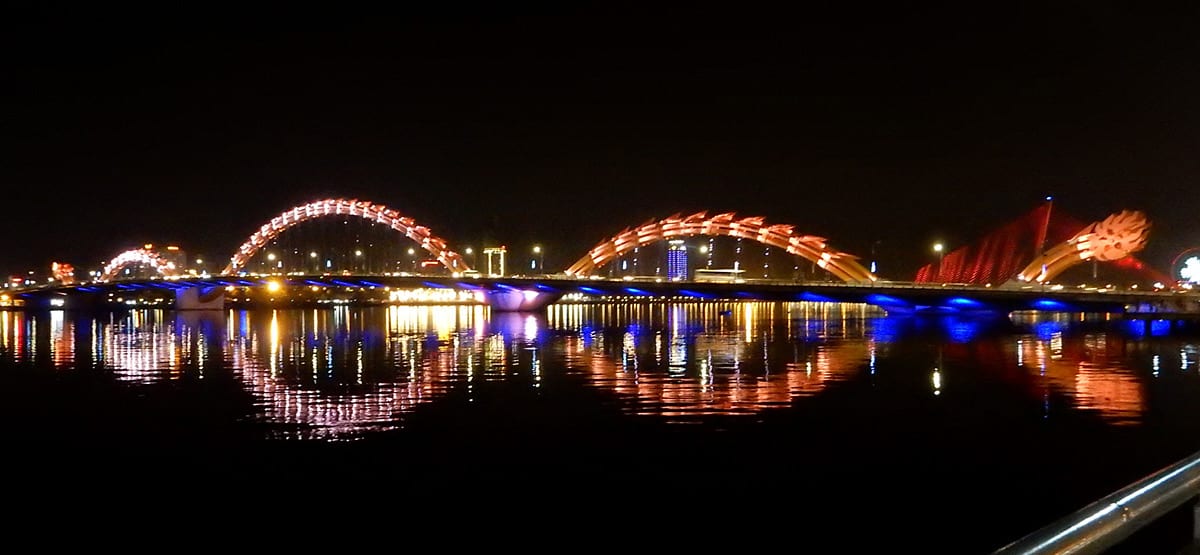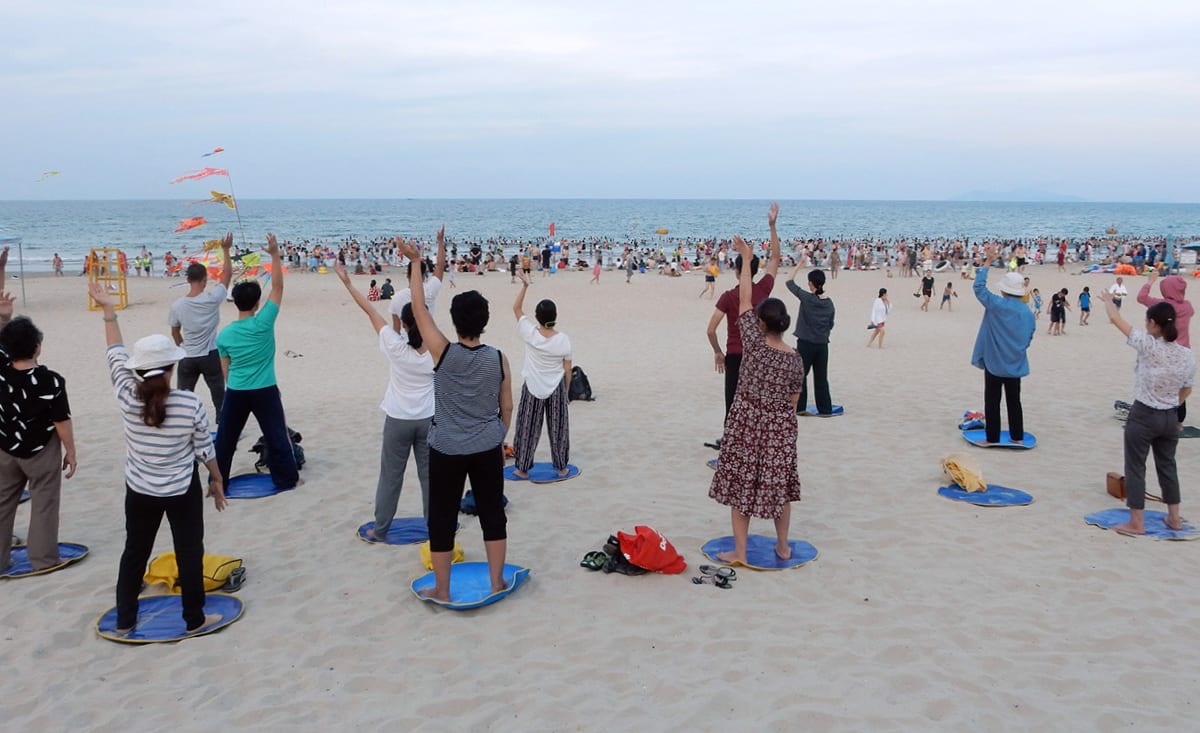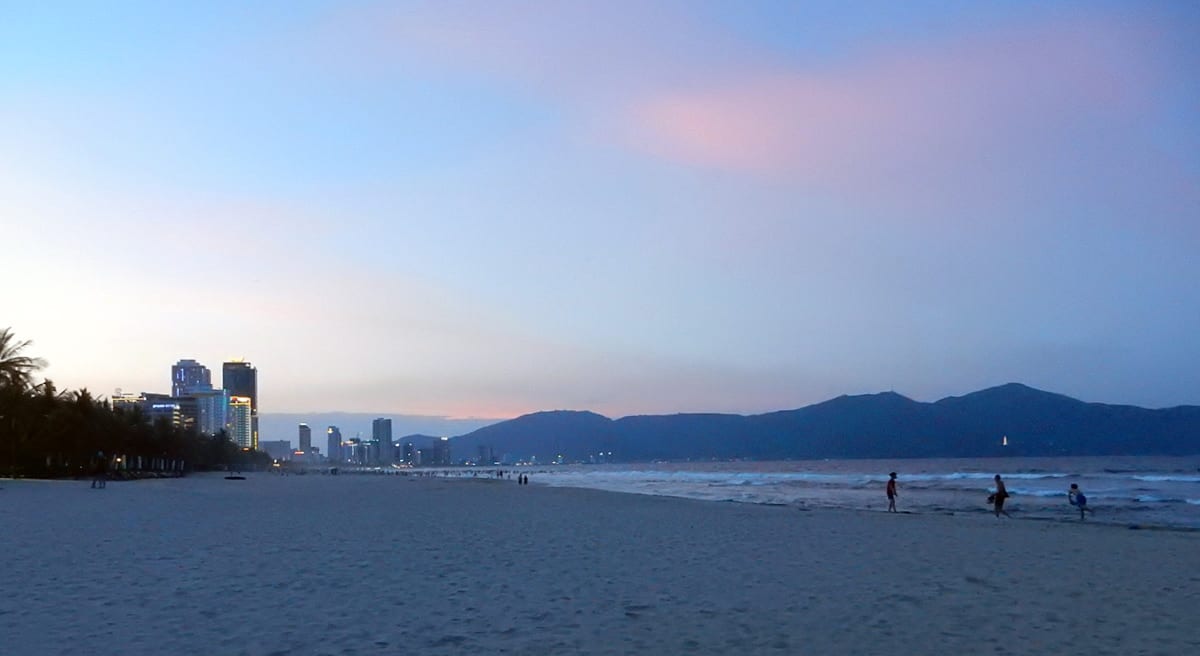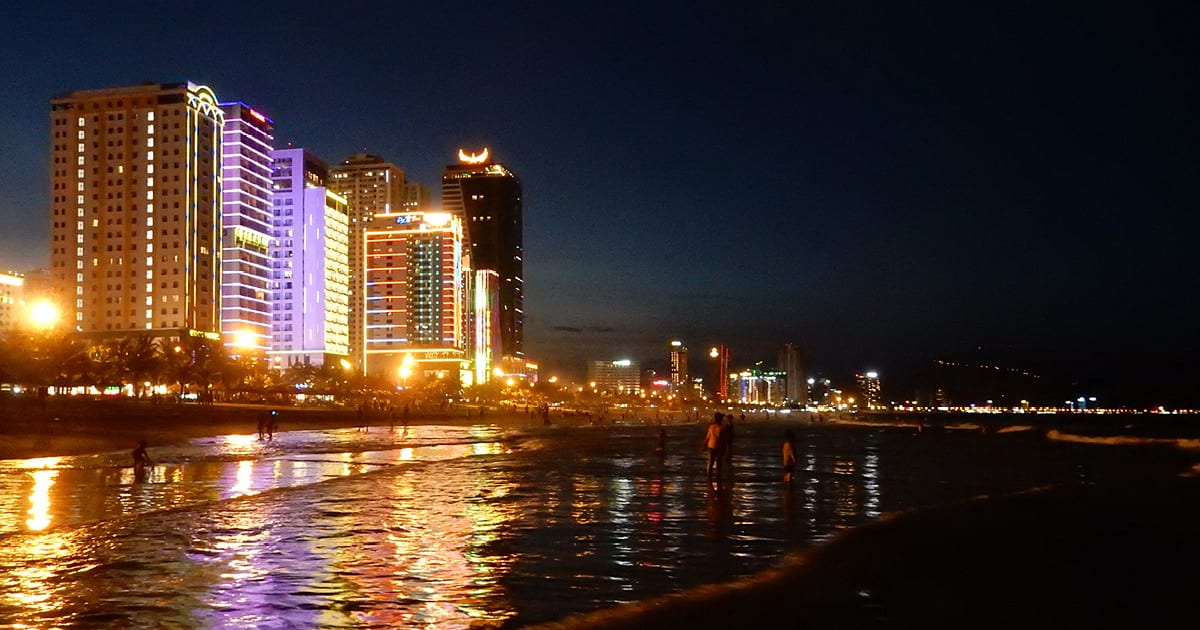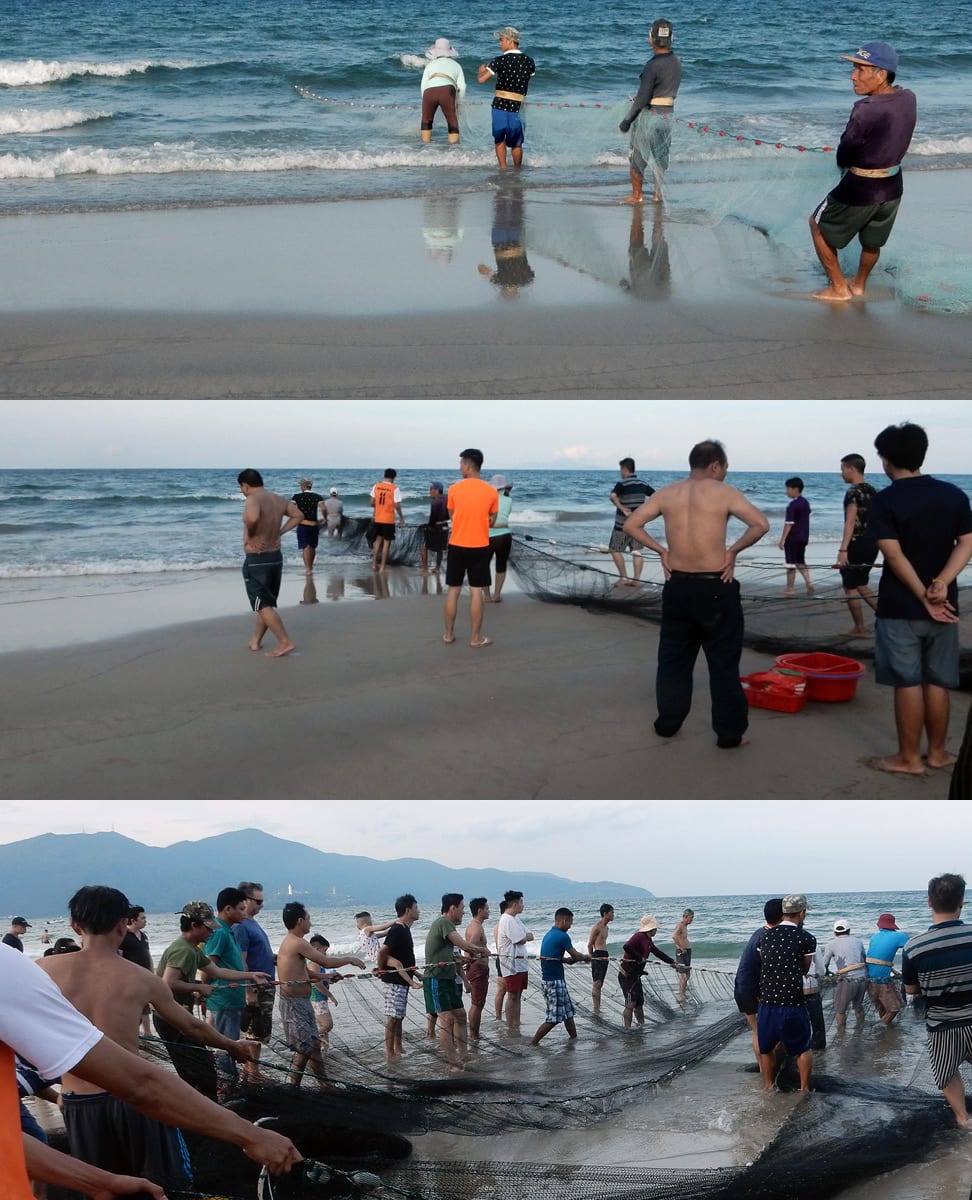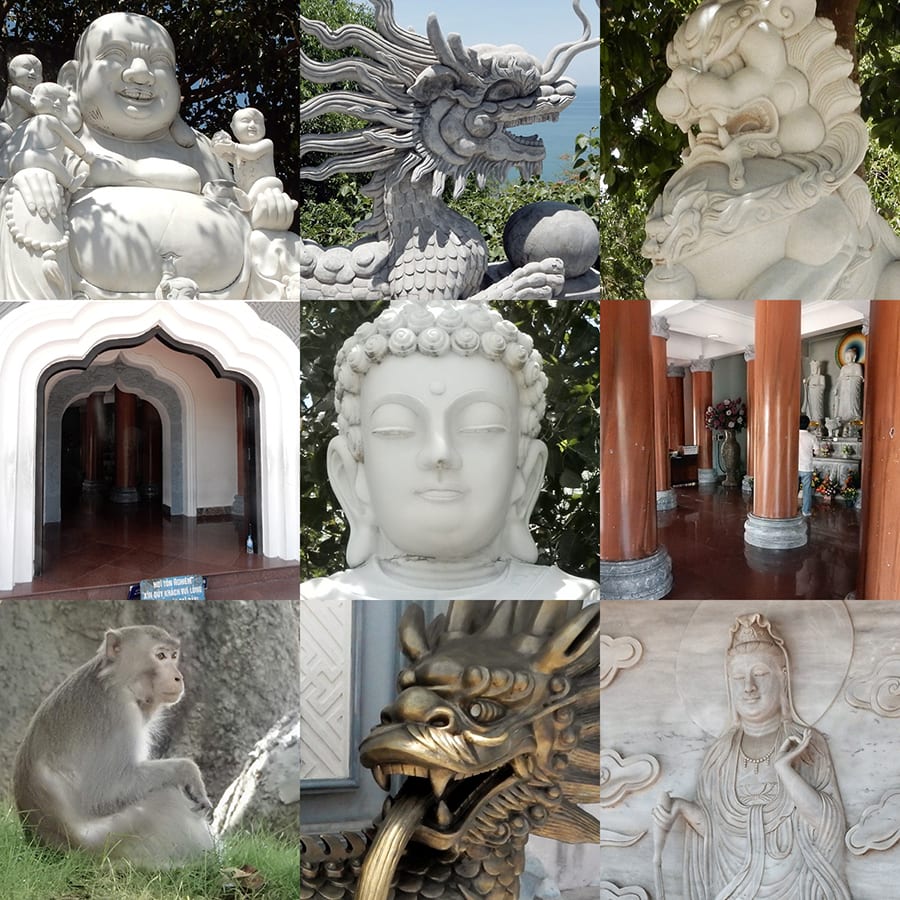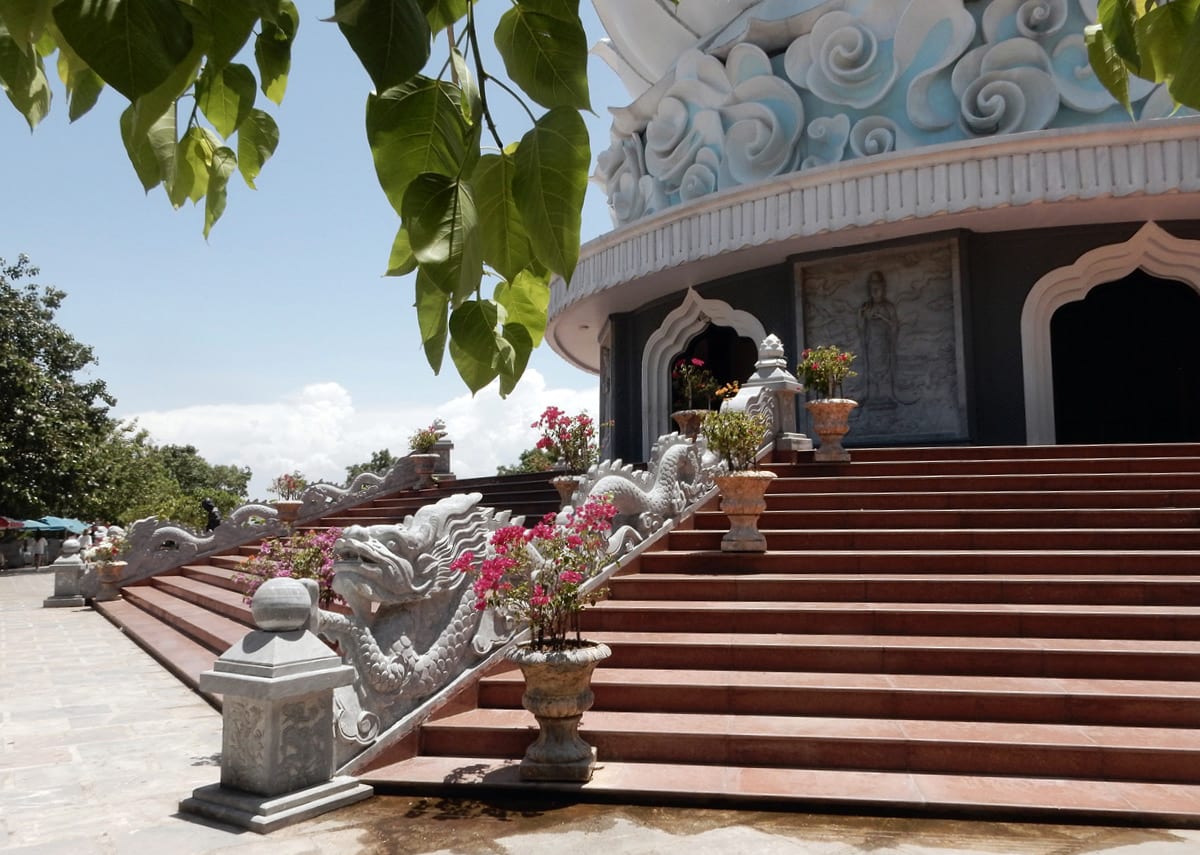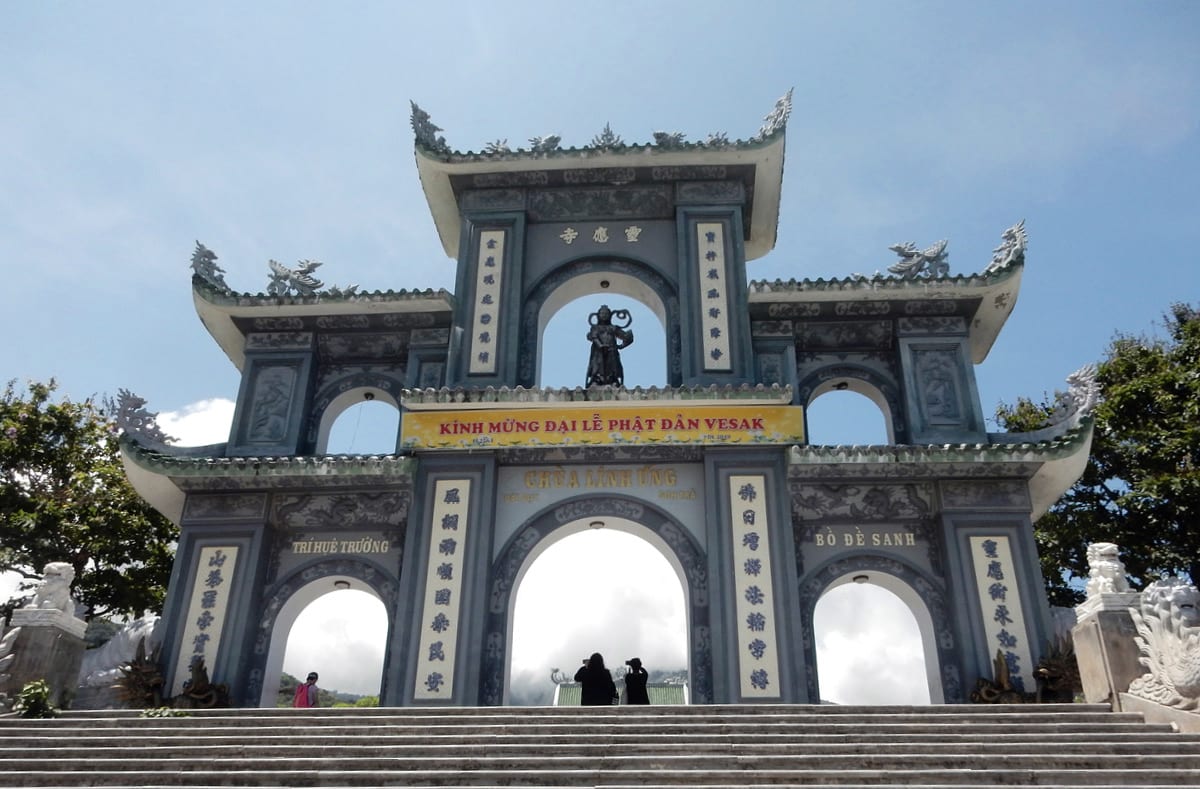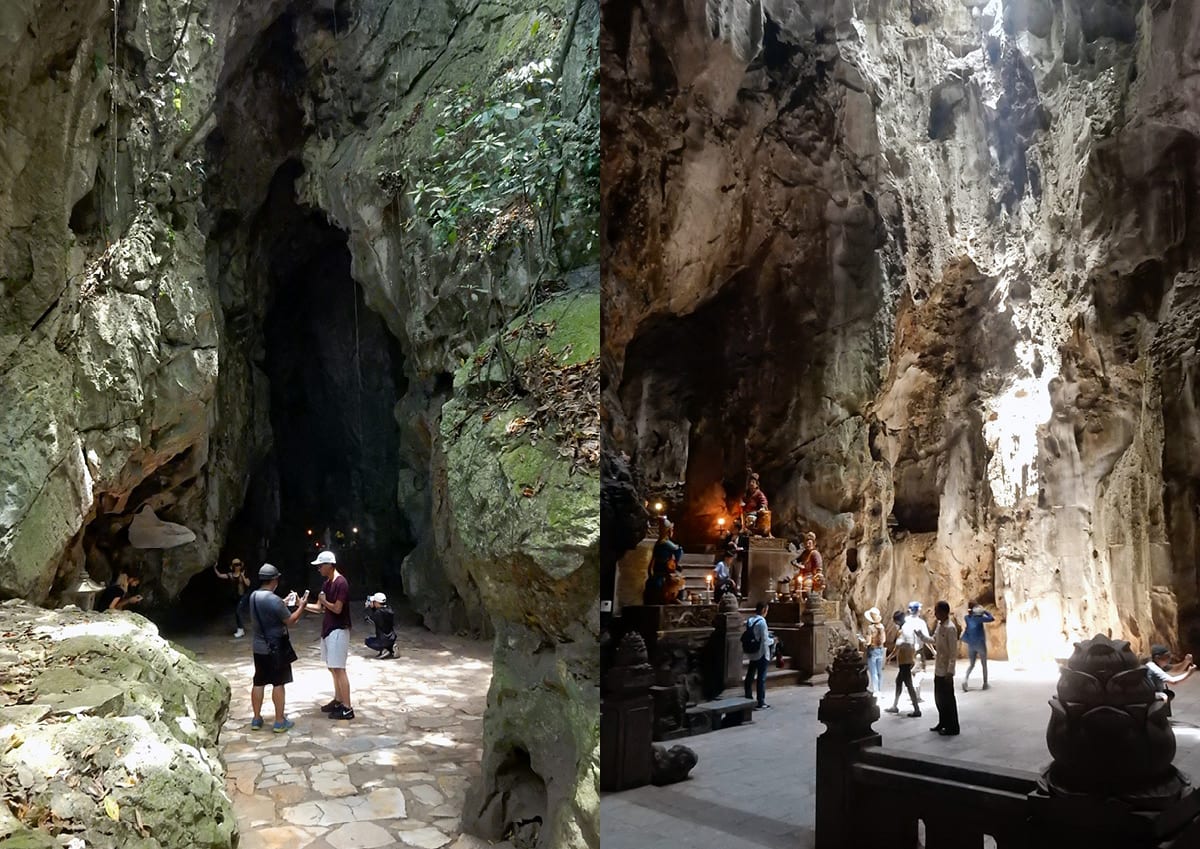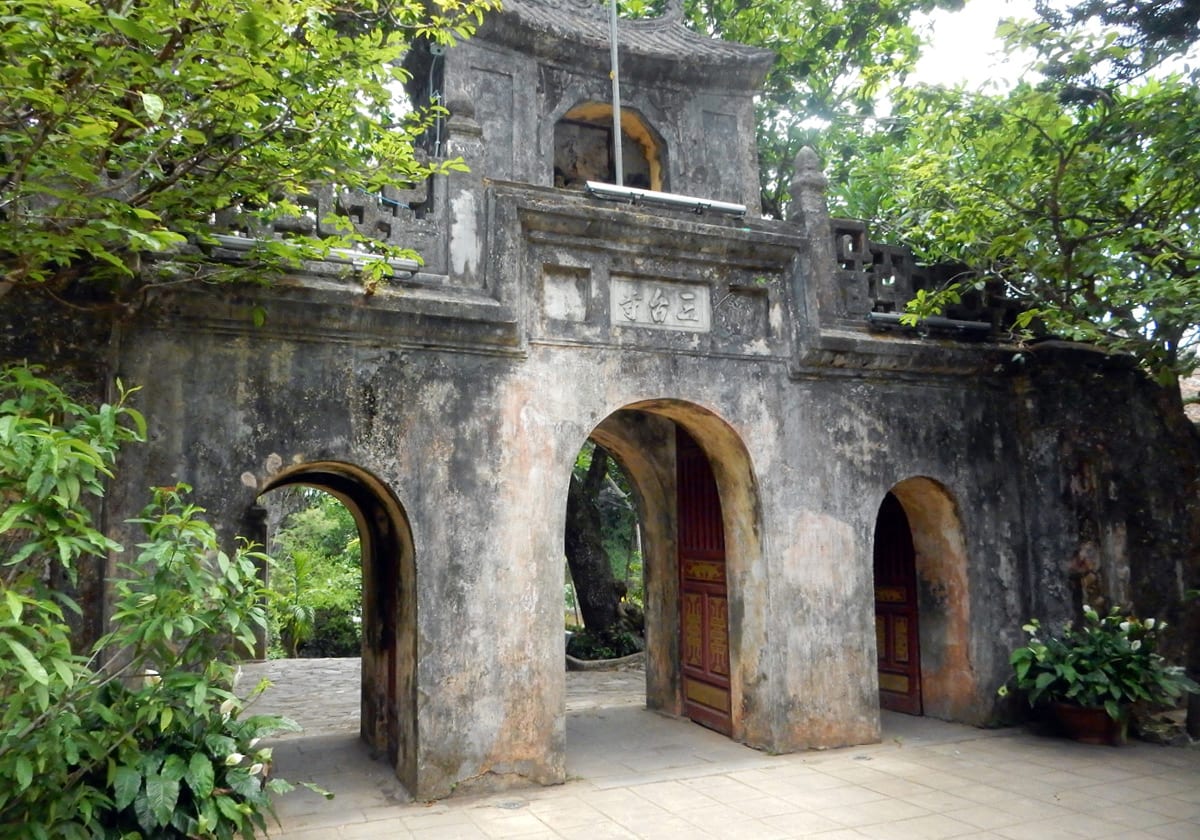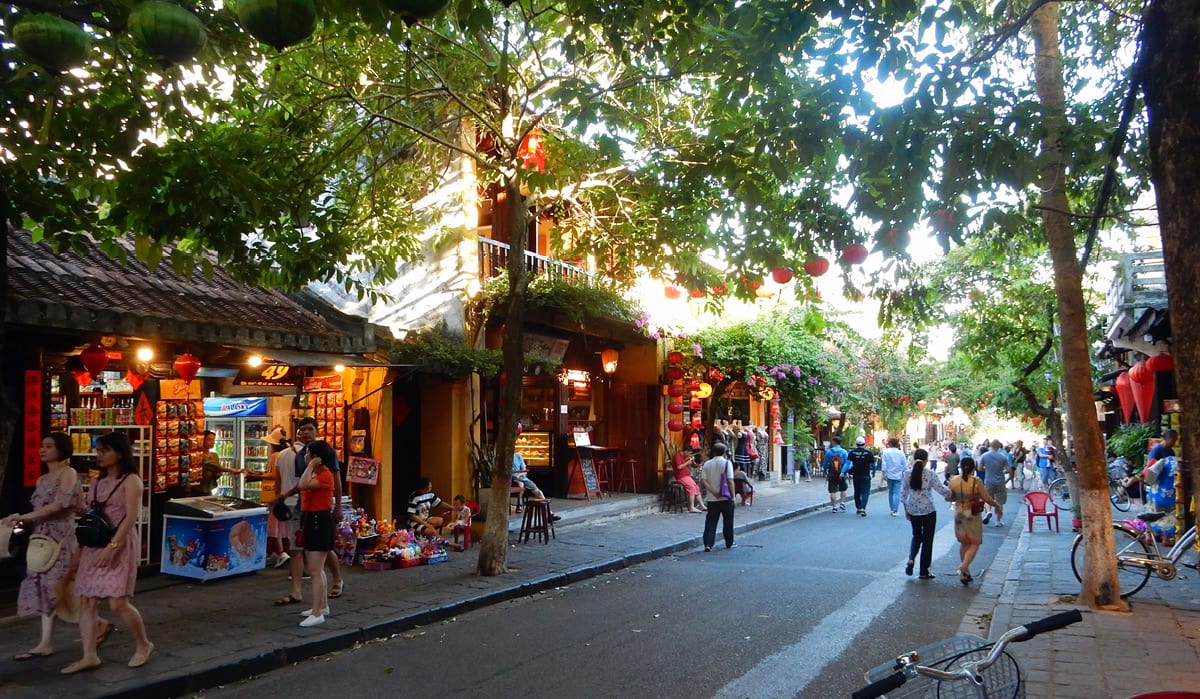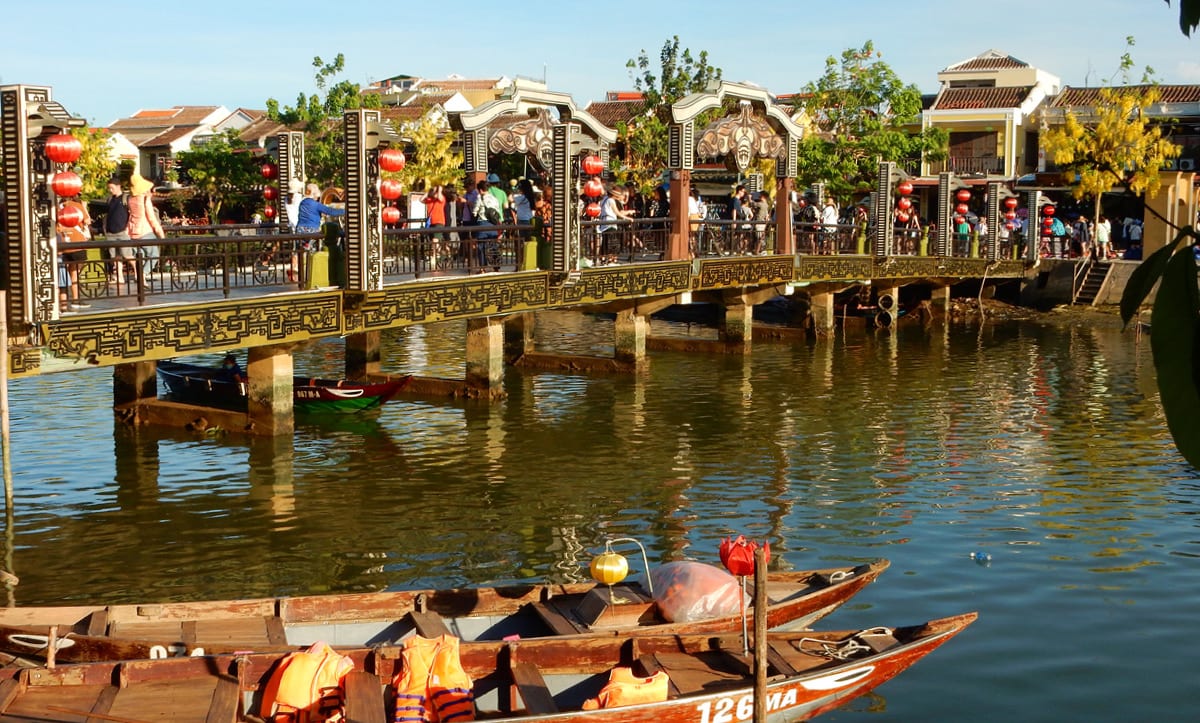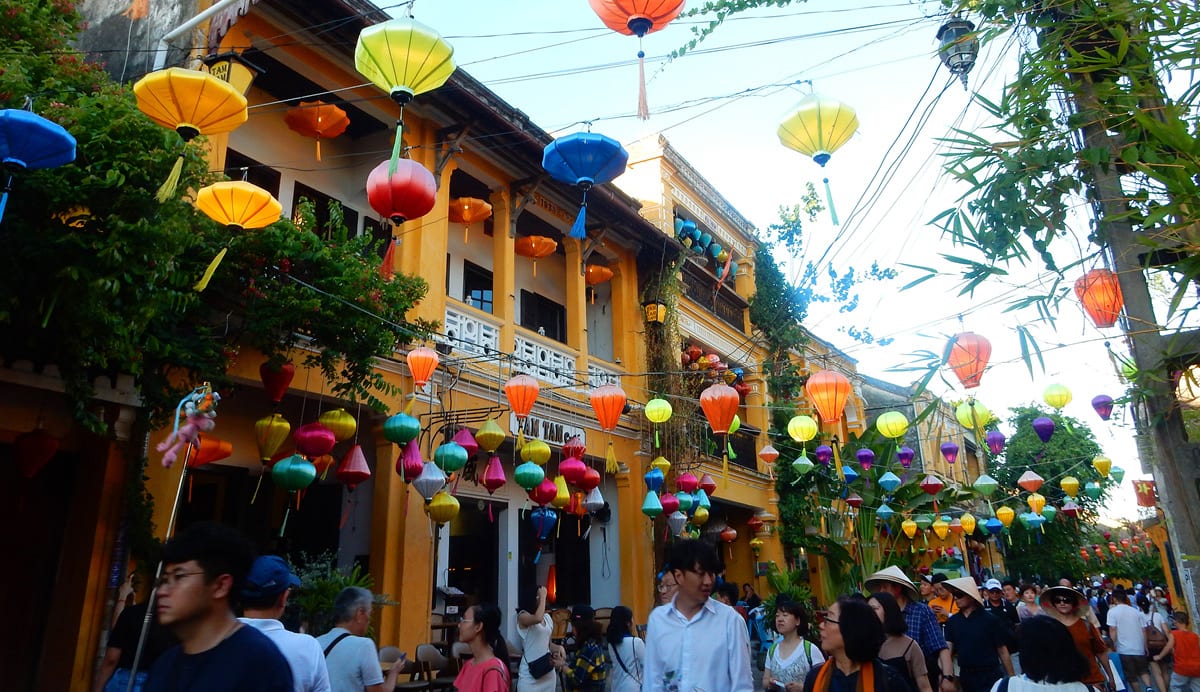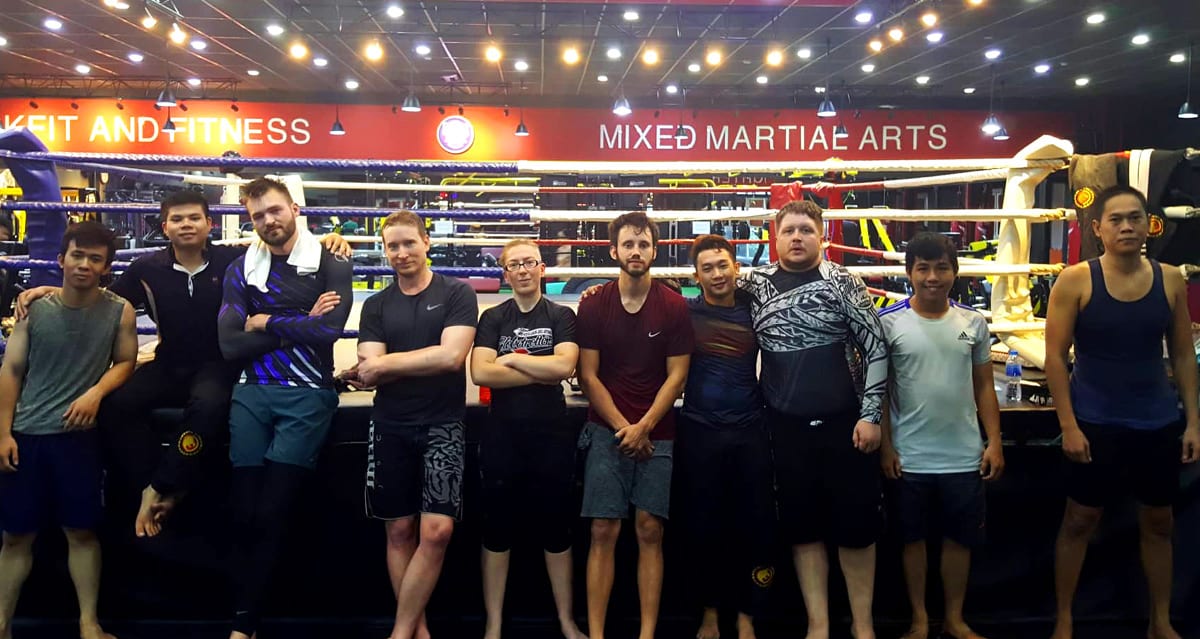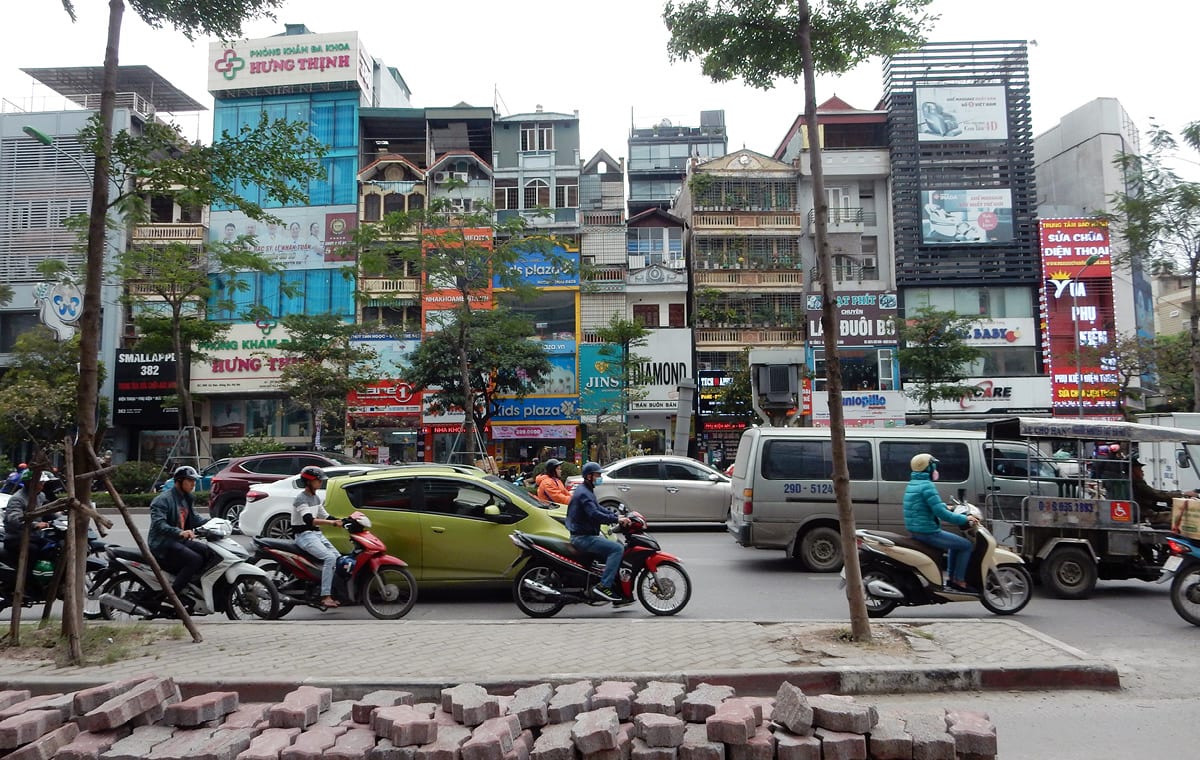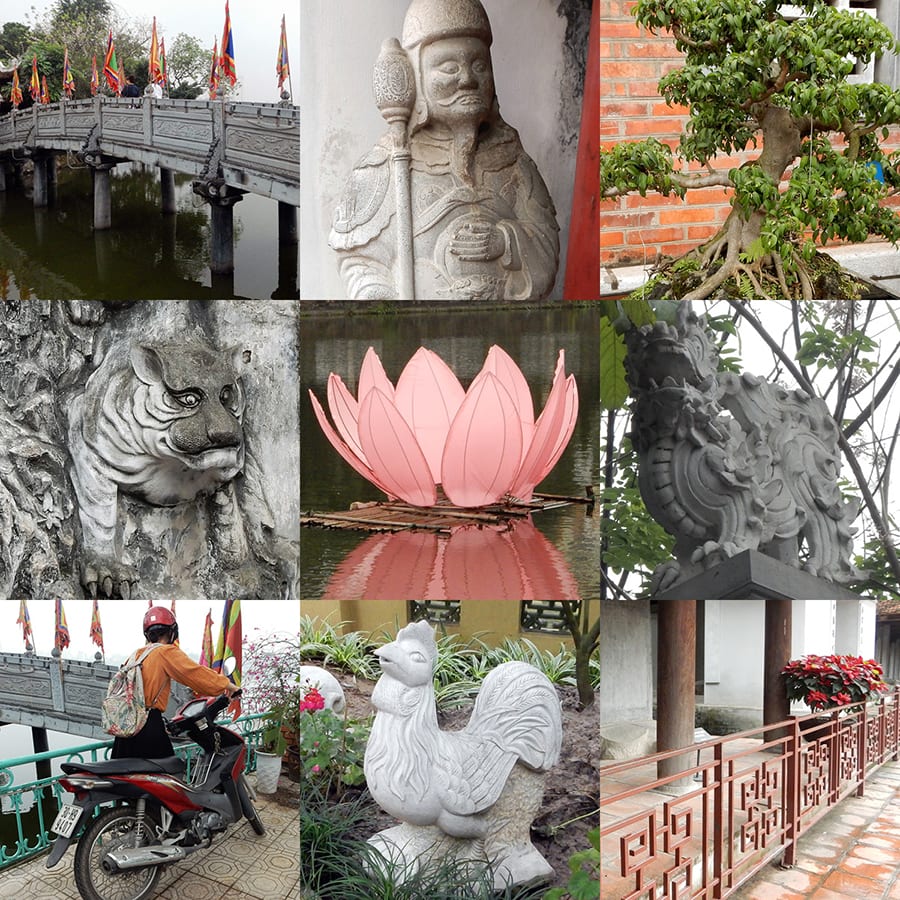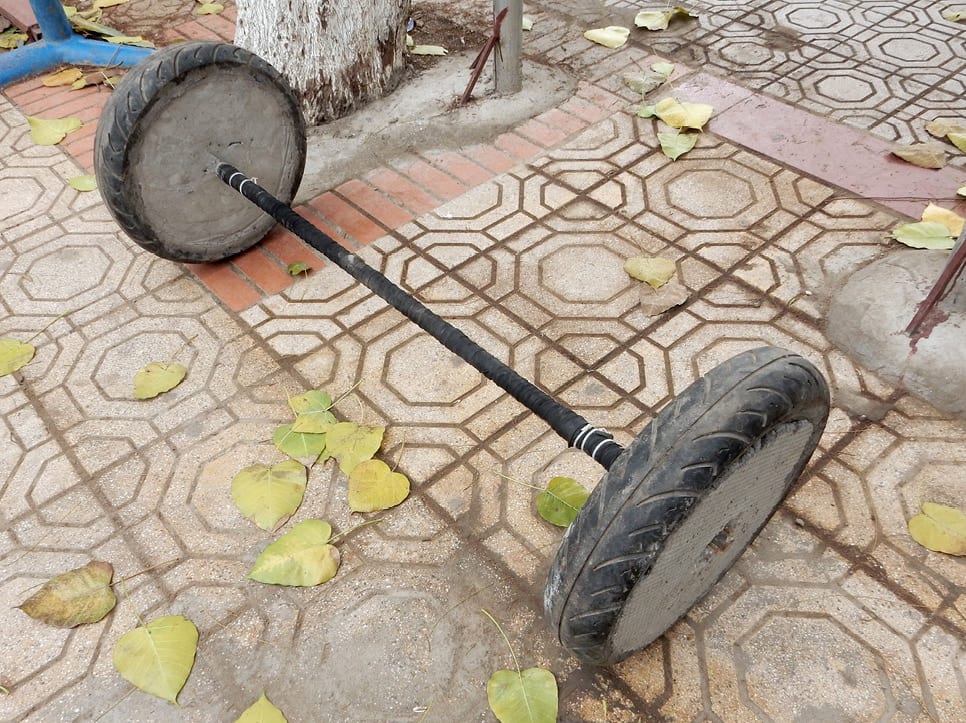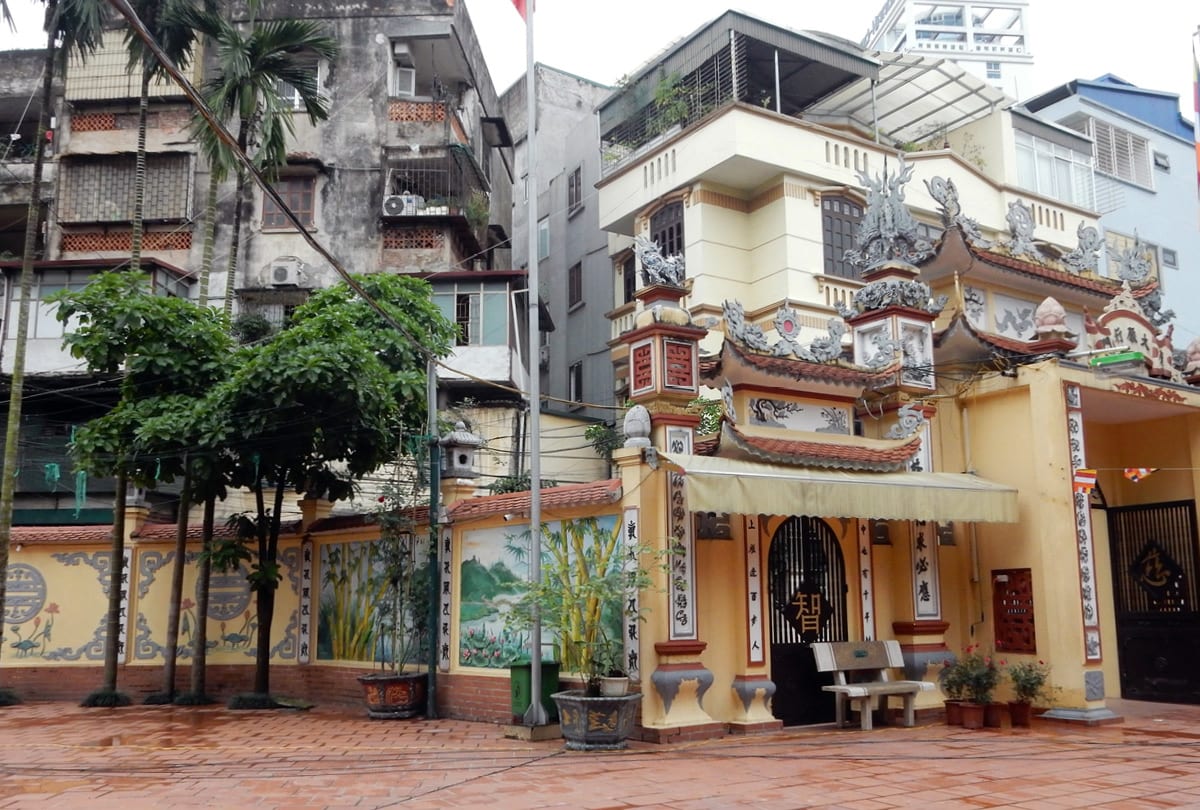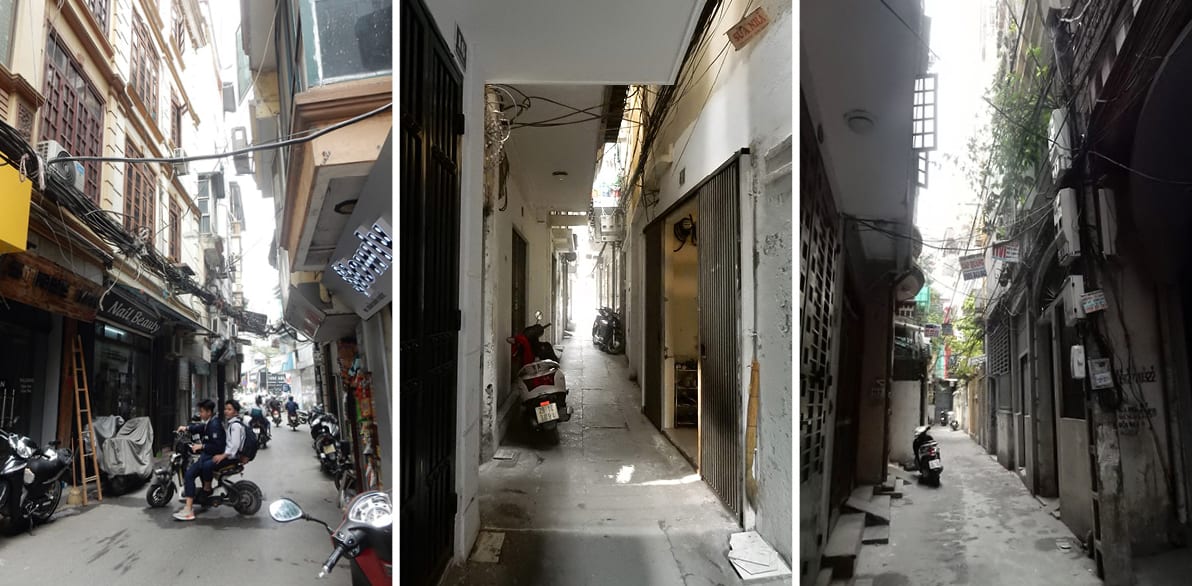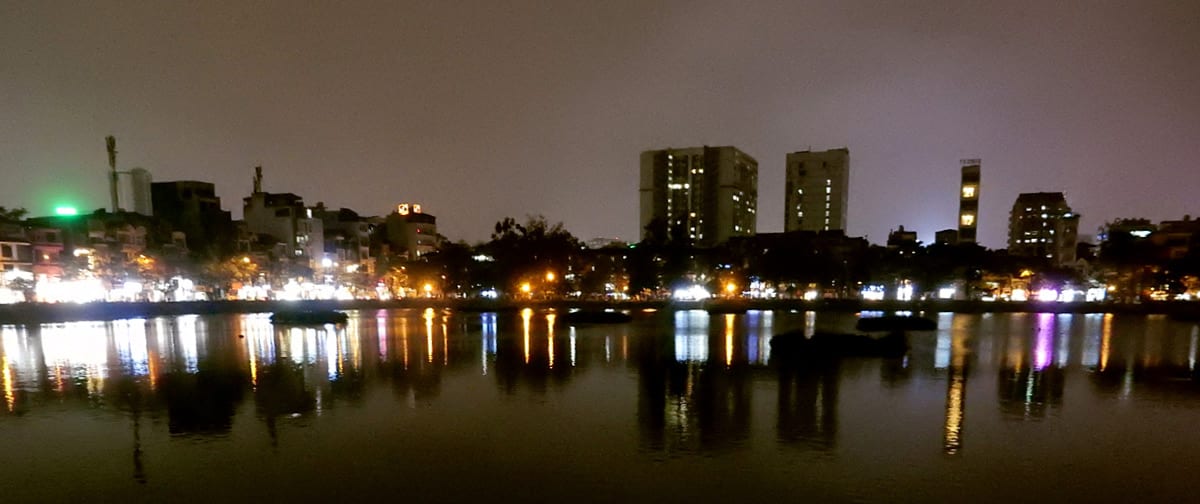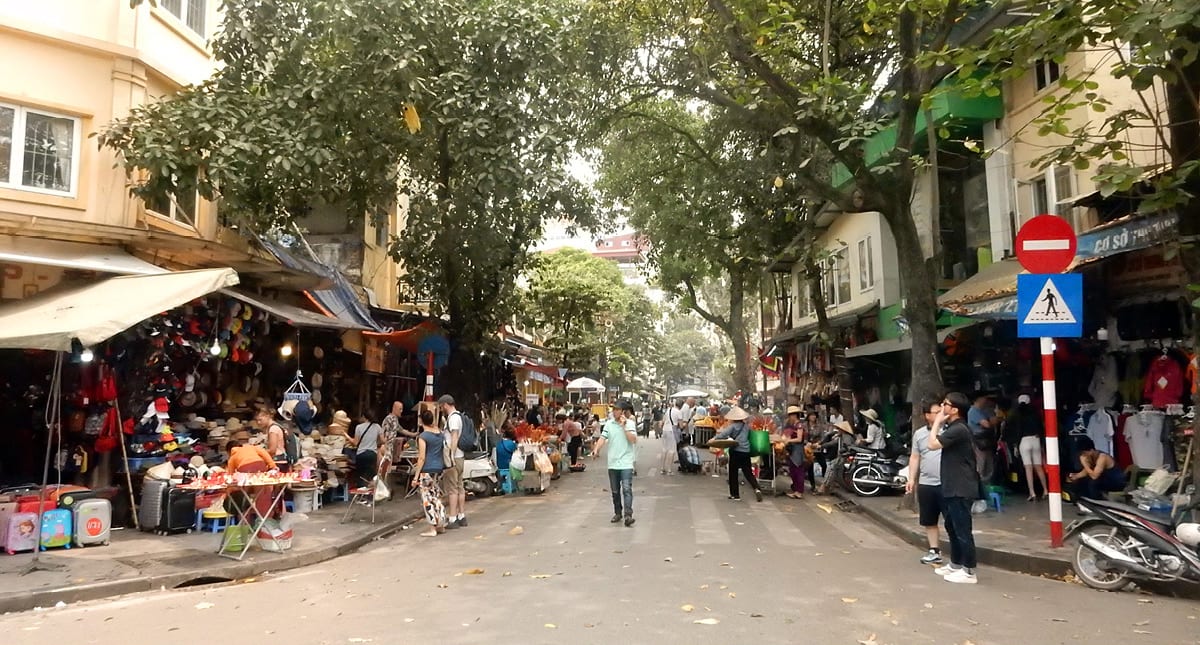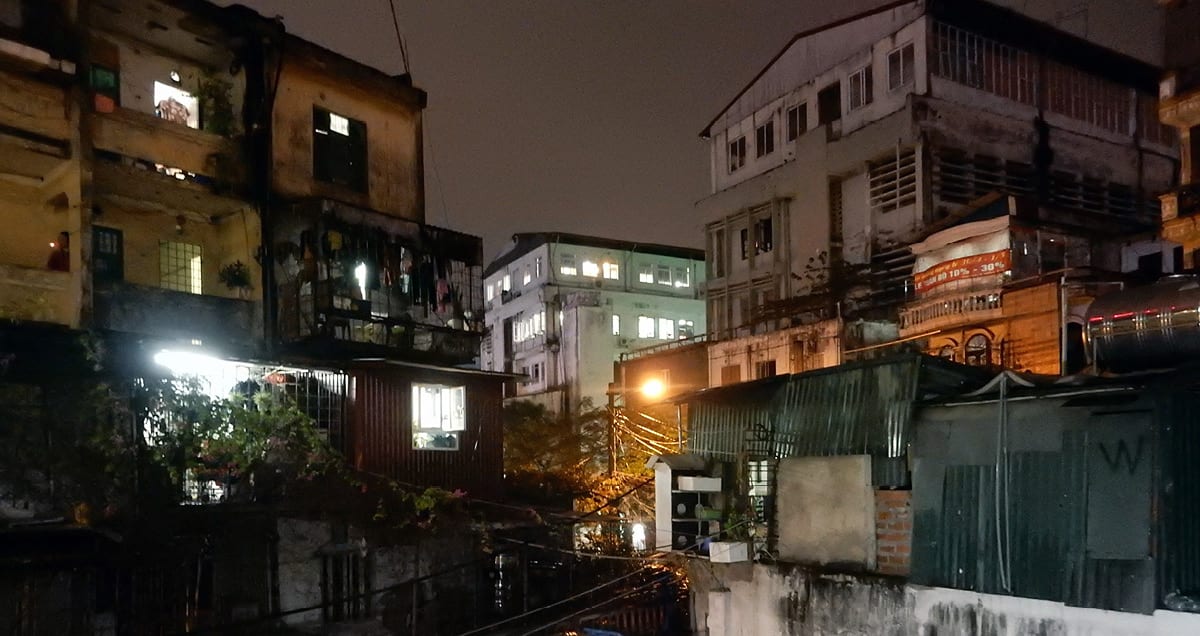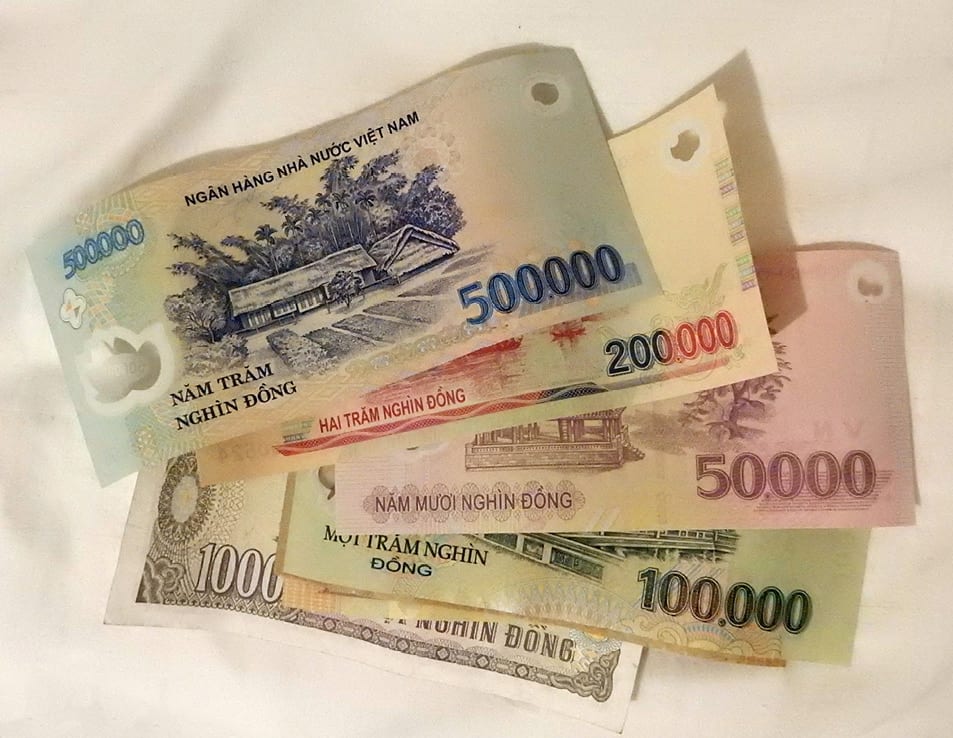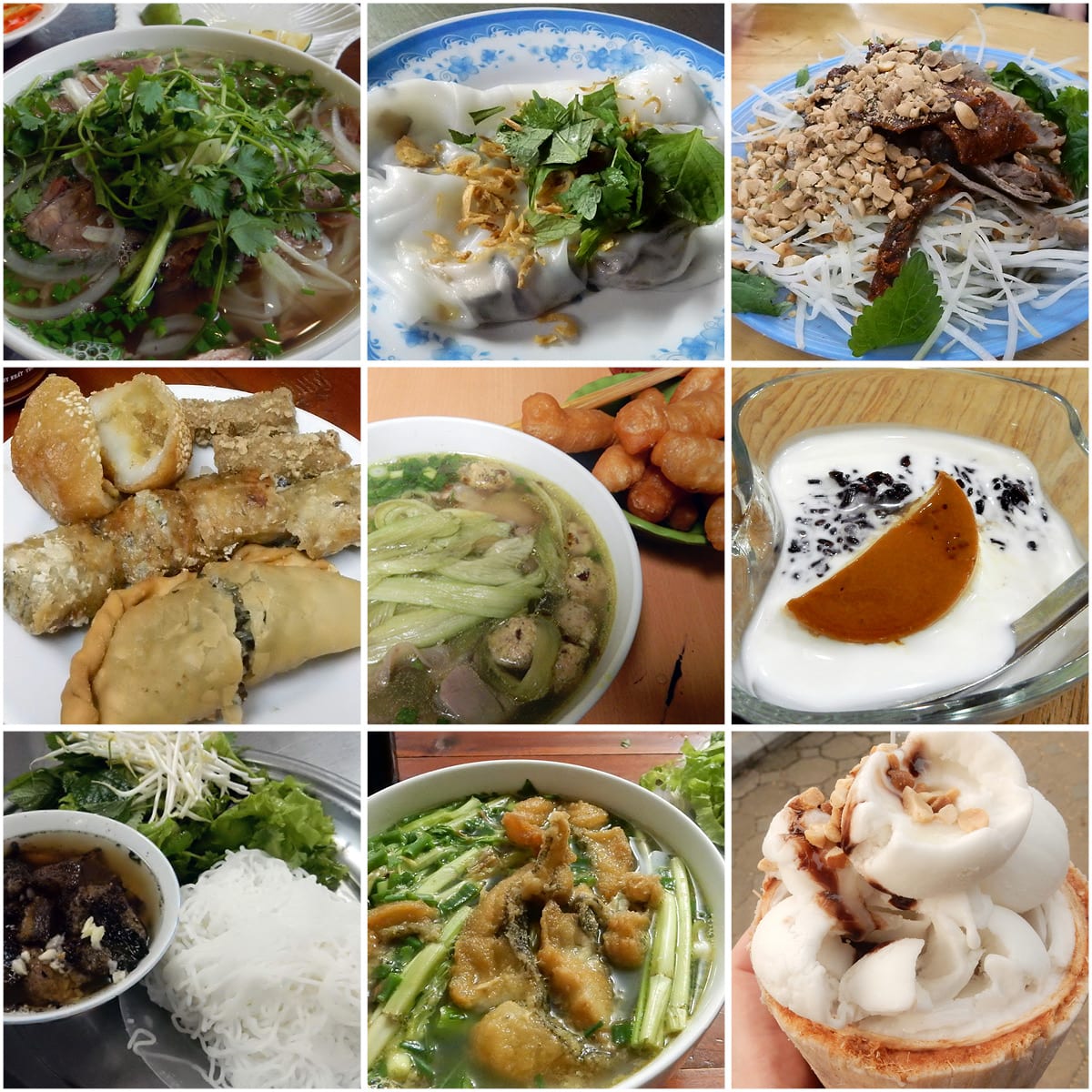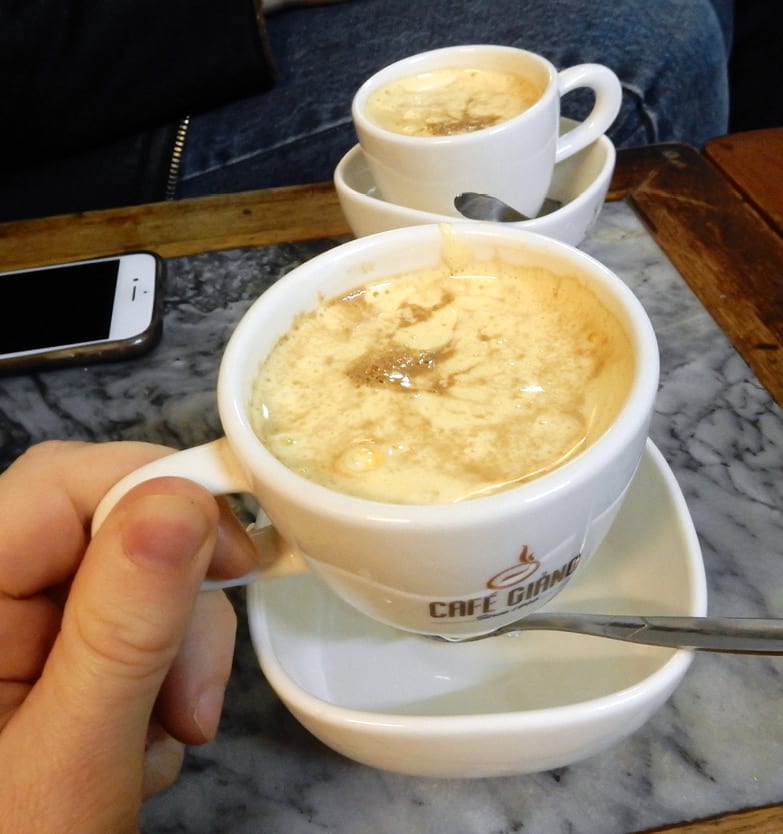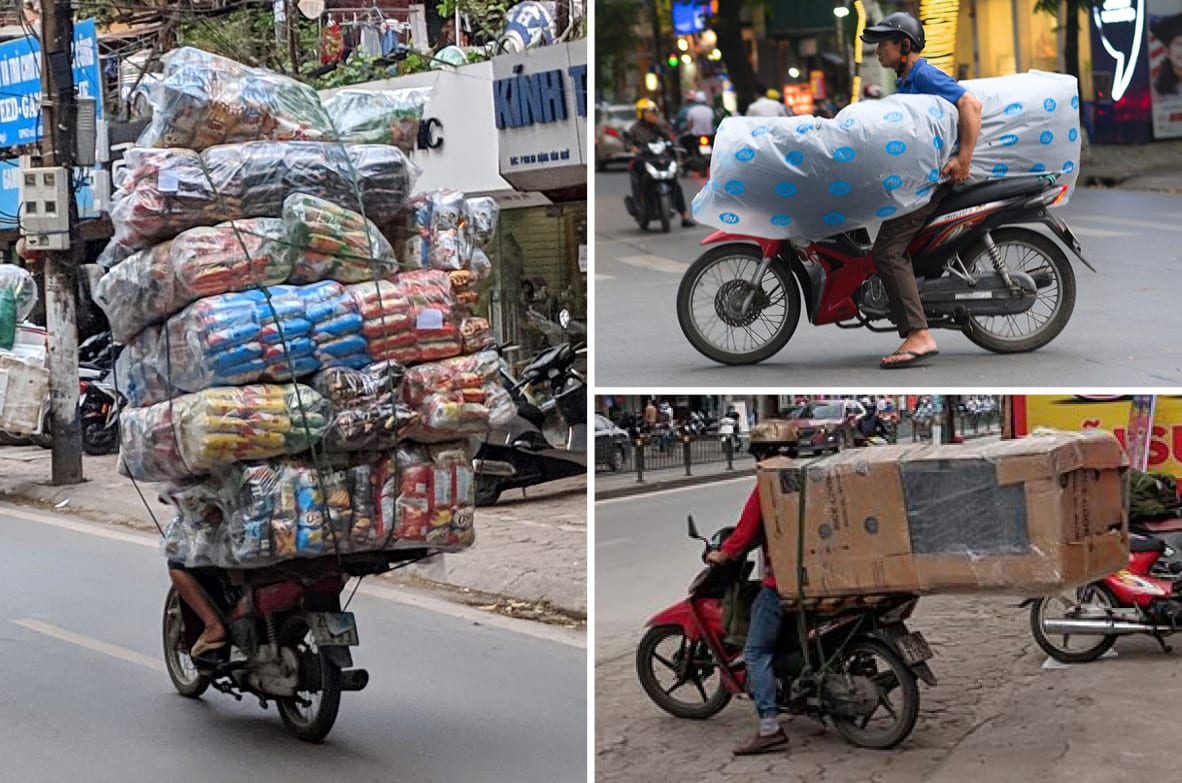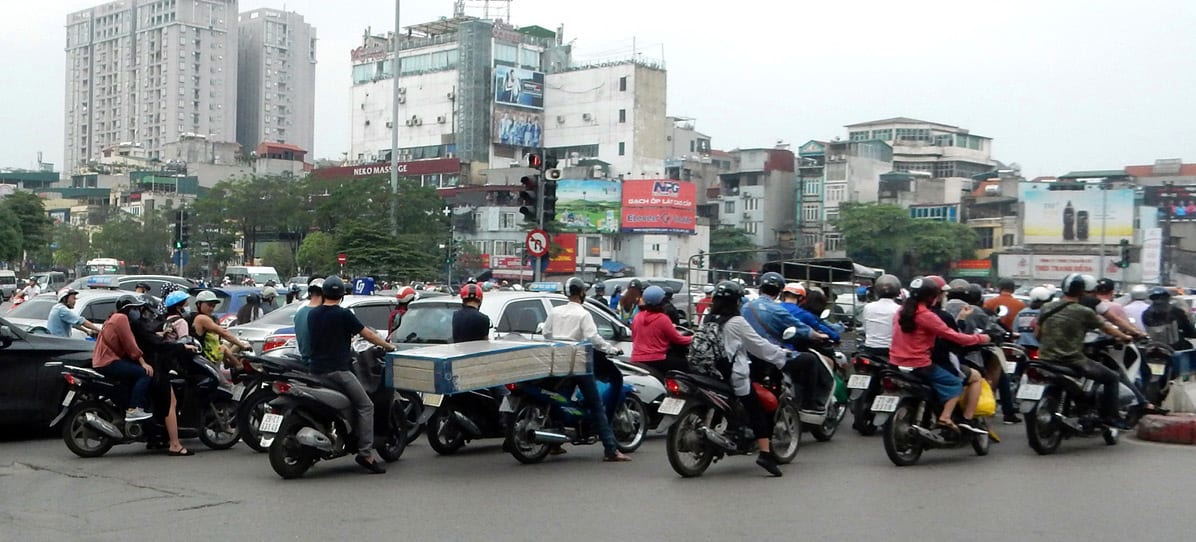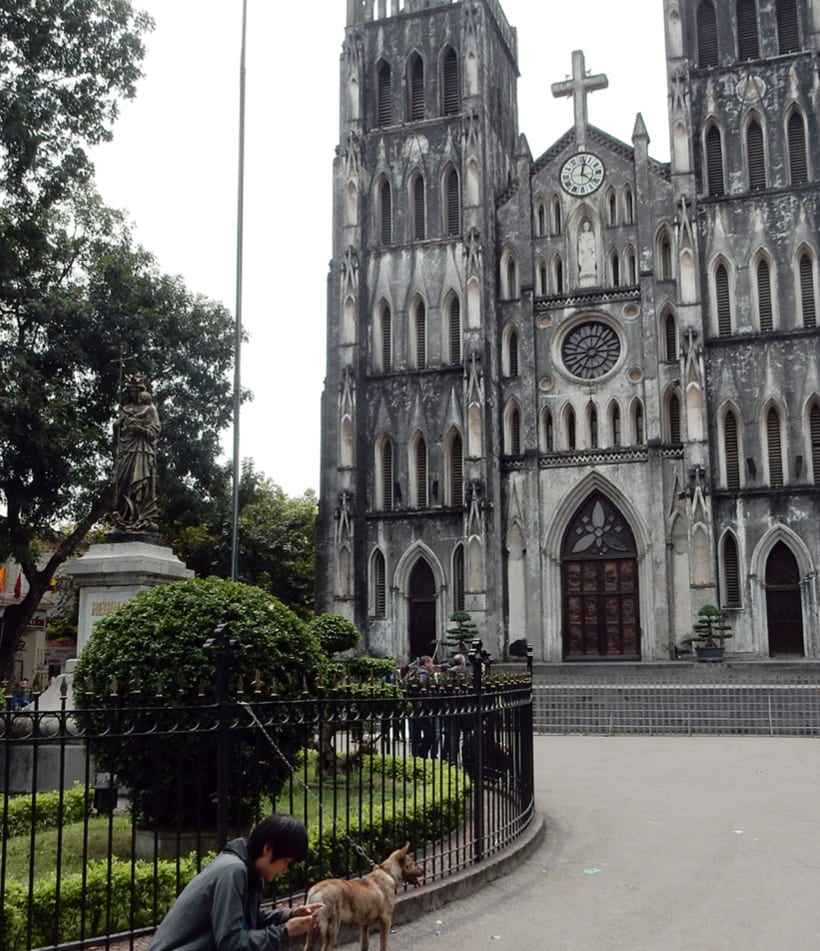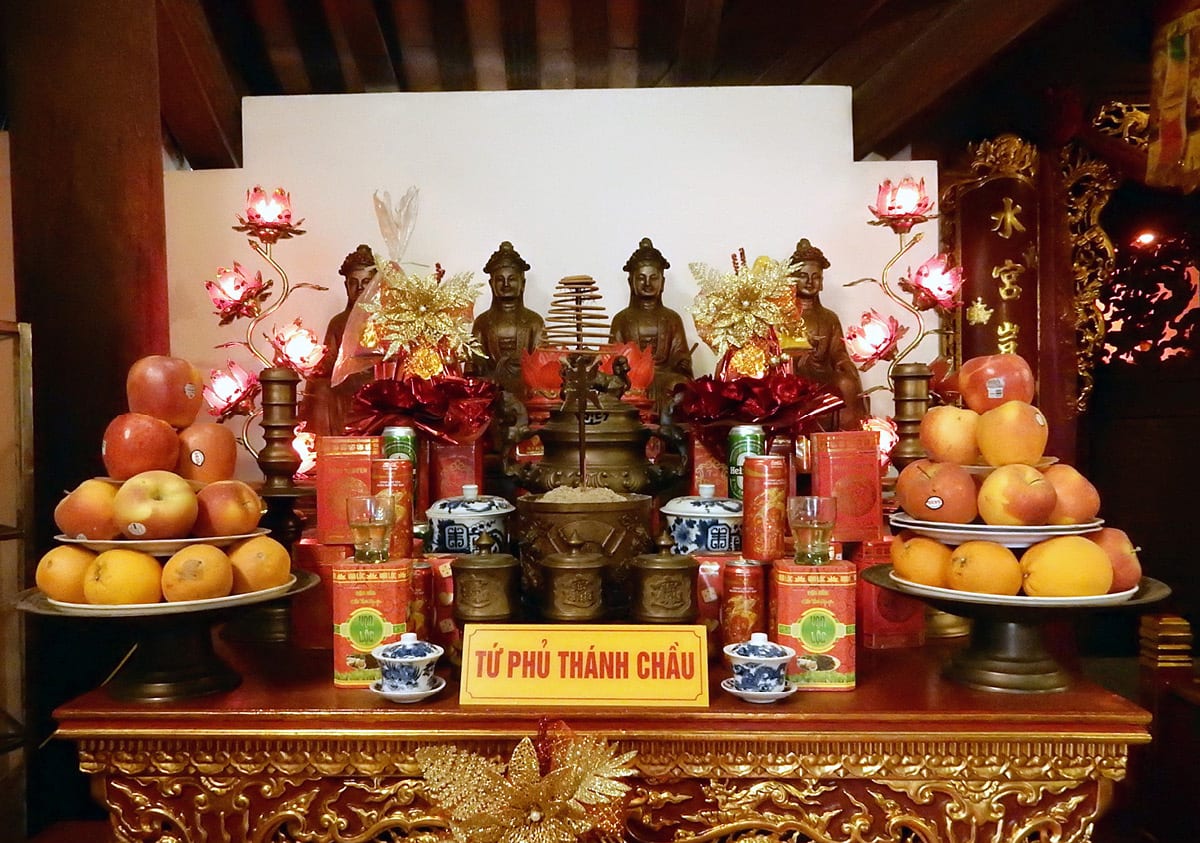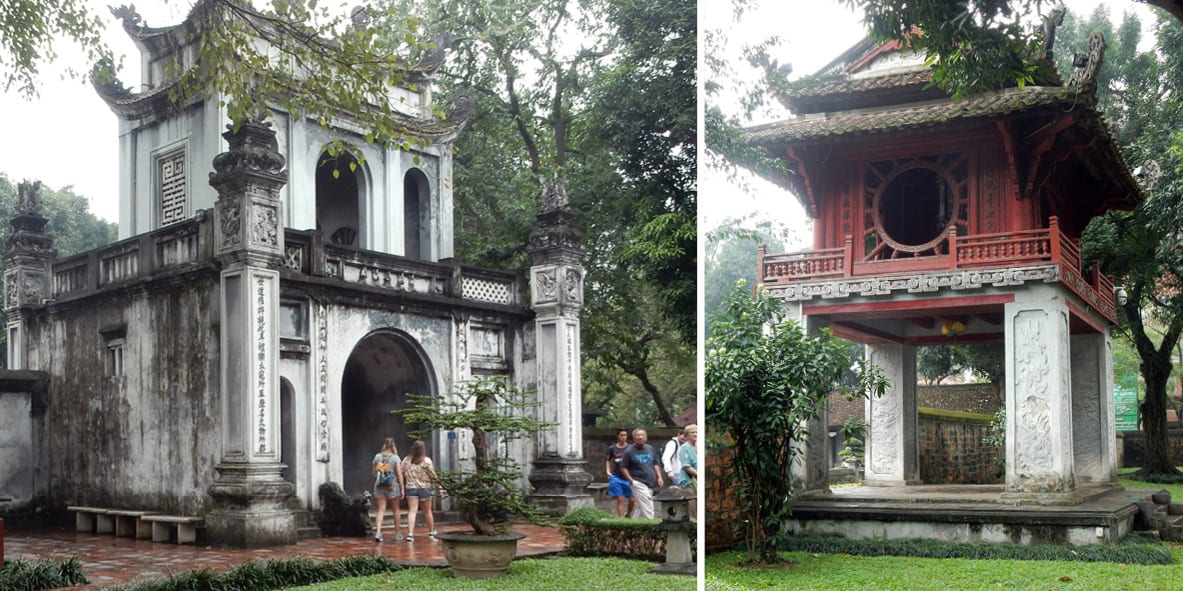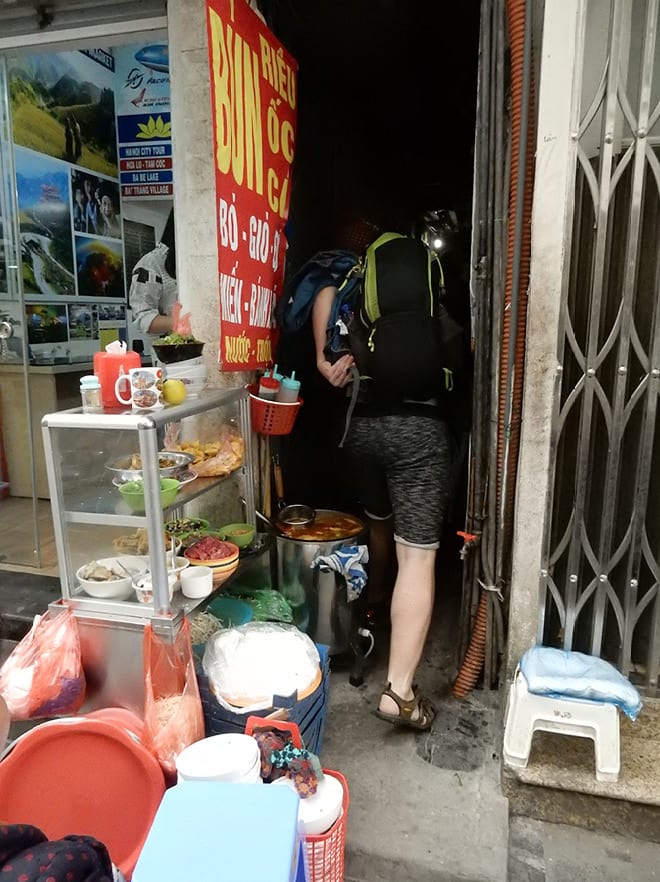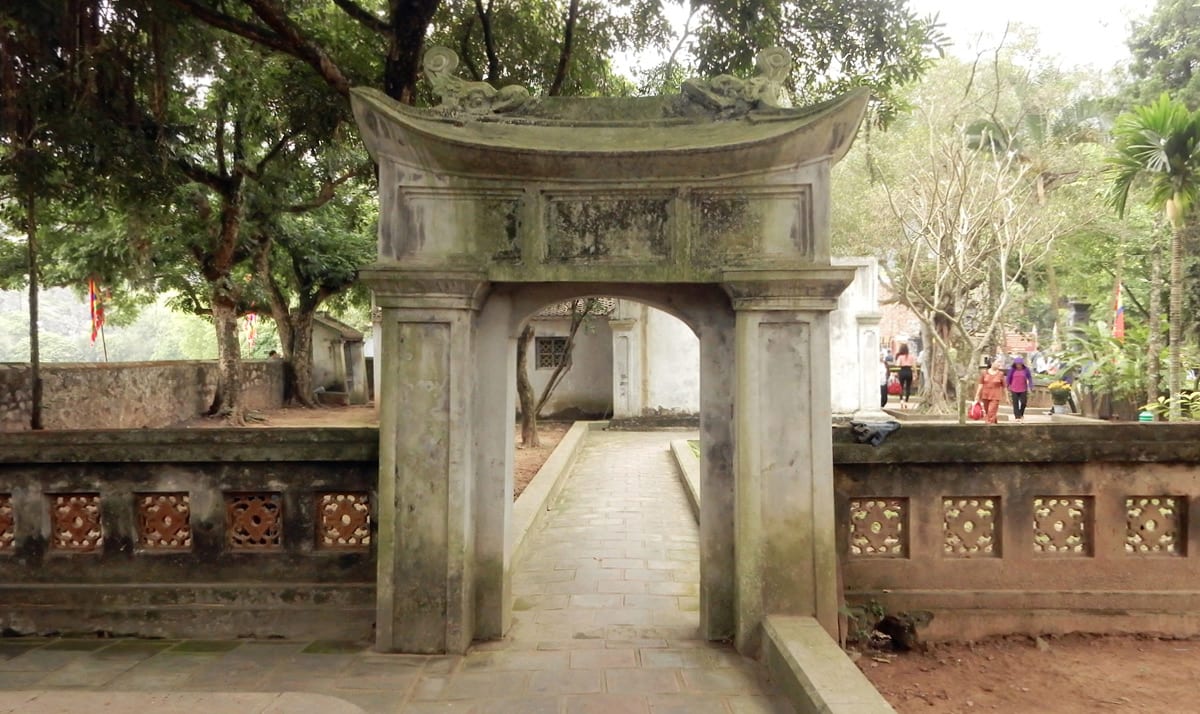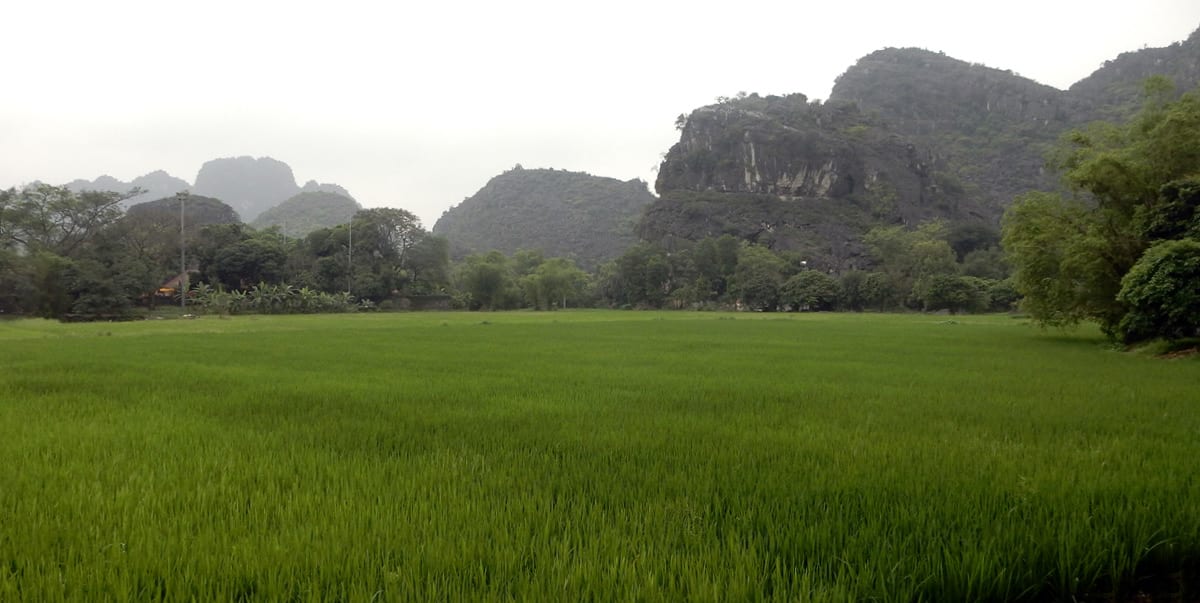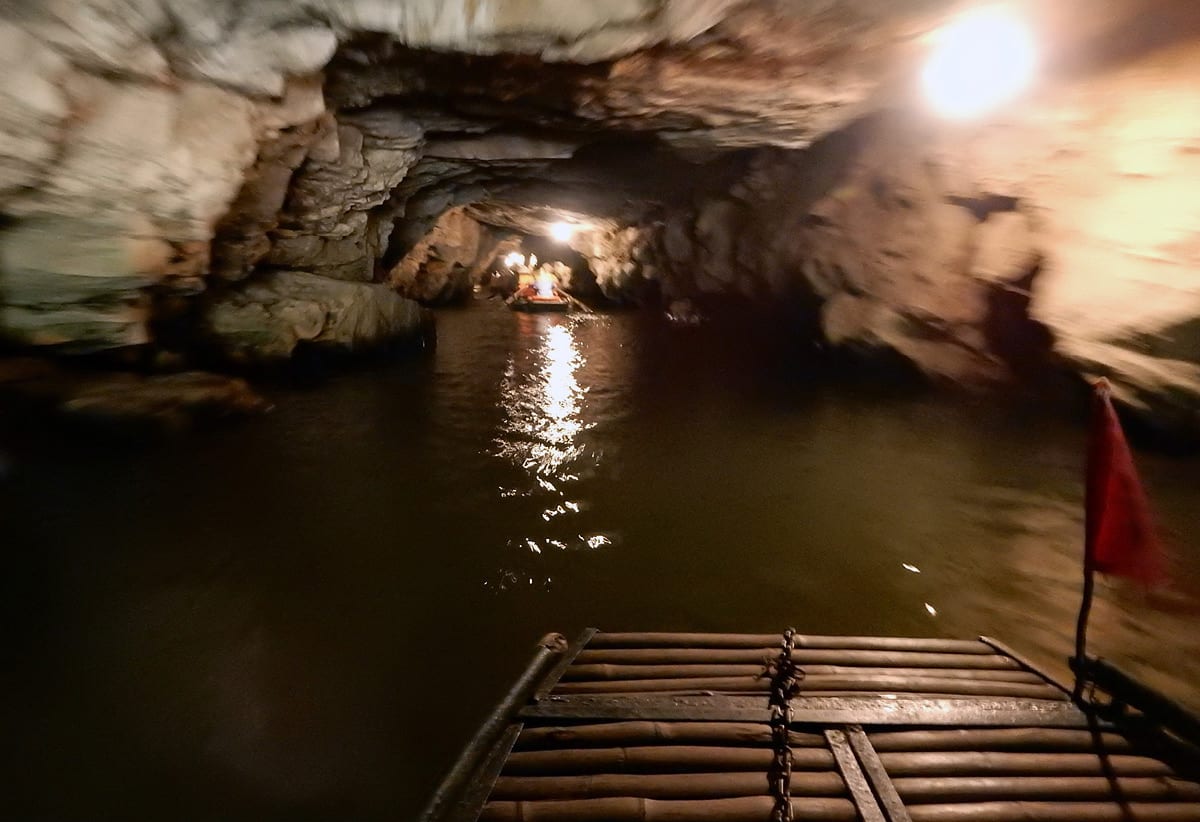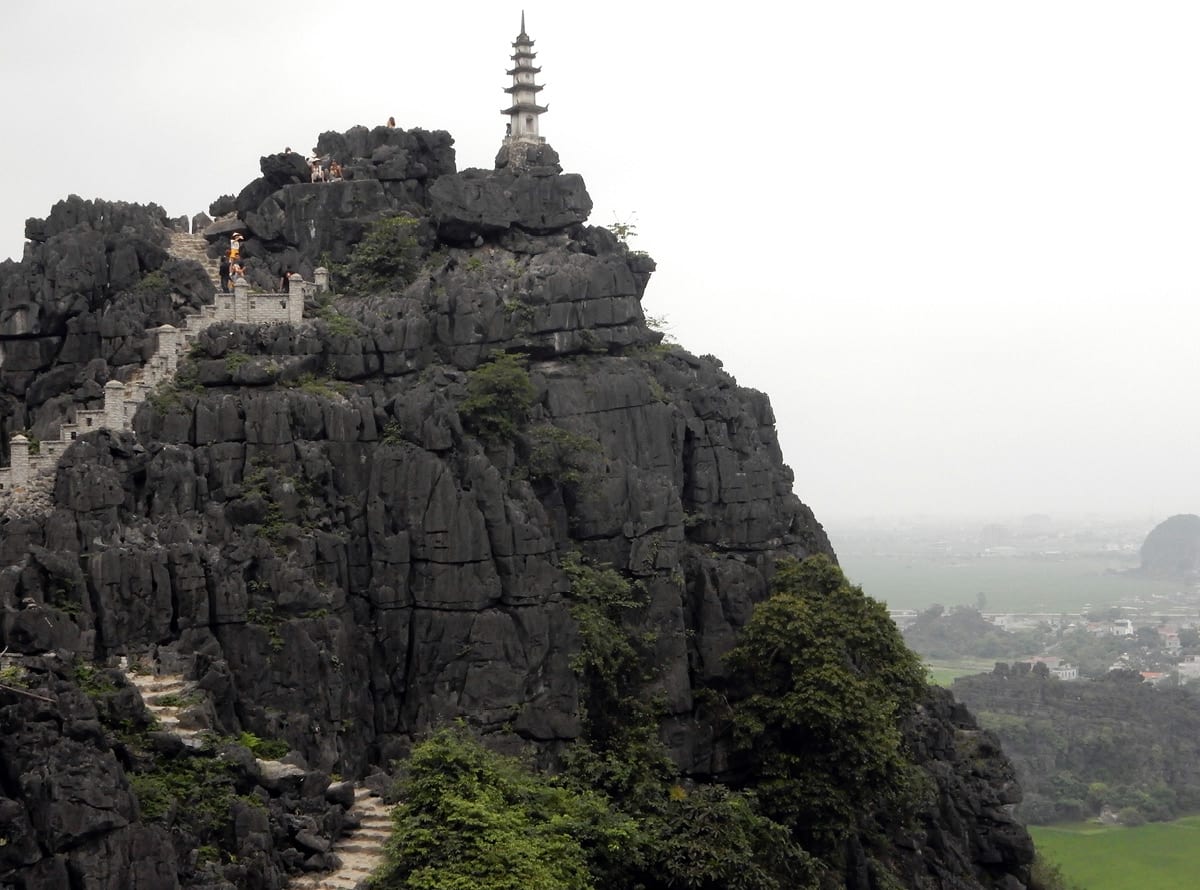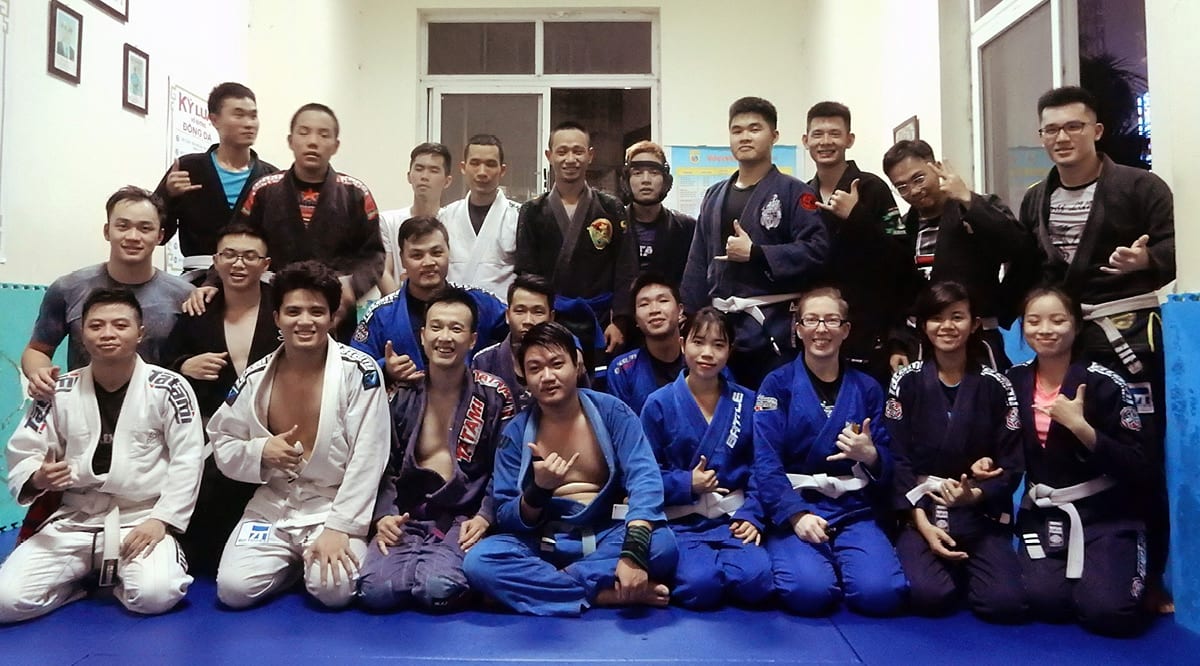Beach Town DaNang
Reasons to go: VERY affordable, great infrastructure for tourists, small-town charm, amazing food, numerous cute cafes, extremely safe for solo female travelers, great “beginner” Asian city destination, beautiful temples, limestone caves, soft sand beaches with kilometers of coastline, bicycle and pedestrian friendly.
DaNang was a wonderful city – peaceful and calm, a beautiful little laid back beach-town with temples, lush hills in the distance, and amazing food. And, it’s really quite magical at night walking along the beach with the tall buildings brightly lit up in the distance. DaNang combined very local vibe with excellent tourist infrastructure – I spent an exceptionally comfortable and relaxed month here!
This city would be an excellent choice of intro or beginner destination to SE Asia. Here, you’ll see very modern massive hotels and apartment complexes next to much smaller local homes and family owned restaurants. It has enough typical Vietnamese elements with local people going about their everyday business to make it feel like an authentic location, but enough tourism to make it convenient and easy to navigate.
People and Language
People in DaNang were friendly and welcoming – quick to smile despite language barriers, and generally happy to have the business of tourists. As in Hanoi, the level of English spoken was generally lower than in Thailand with many of the older generations speaking little/no English. But, with the help of Google Translate when needed, it’s really no problem at all.
Clean Air
Unlike the previous 3 cities I’d stayed in – DaNang had wonderfully clean air! No air masks or daily pollution checks needed this month! People did commonly wear air masks while riding scooters, but that was more to avoid directly breathing exhaust from the vehicles than because the overall air was bad.
Tourism in DaNang
Throughout DaNang you’ll see many new buildings under construction, many of them massive apartment complexes and hotels. It’s as if the DaNang just started realizing how extremely profitable and beneficial tourism can be to their economy, and is now in a rush to develop as much as possible to support it. Oddly, most of the restaurants and cafes in even the most touristic parts of town aren’t anywhere close to full capacity most of the time, which was actually really nice. DaNang seems like it could easily accommodate 20x more tourist that are currently present! While it’s not uncommon to see tourists (we’re pretty conspicuous) out and about, most of the people in the neighborhoods (even in the more touristic parts of town) are still local residents. This might be because I was visiting towards the end of the tourist season, when the summer heat was just starting to become extreme. Or, perhaps the rest of the world just simply hasn’t realized what an amazing little vacation spot this town is yet!
SIM Cards and Phone Service
 I purchased a local SIM card upon arrival for about $8 at the airport. It included 15GB of high speed data plus a local phone number (not something I needed, but included in the package anyhow) for 25 days. I needed a couple extra days of phone service beyond that so, here’s what I learned about topping up cards.
I purchased a local SIM card upon arrival for about $8 at the airport. It included 15GB of high speed data plus a local phone number (not something I needed, but included in the package anyhow) for 25 days. I needed a couple extra days of phone service beyond that so, here’s what I learned about topping up cards.
I was using Mobifone, one of the larger companies in Vietnam. To get more service on your phone after the initial plan expires (this system applies to all the companies), you need to first add money to your account, then purchase a new data plan. You can add money to your account using a handful of online websites and apps, but most of these require a Vietnamese bank account. Fortunately, you can also add money to your Mobifone account at many of the small grocery stores throughout the city (such a Viet Mart). To do this, simply tell the cashier how much money you’d like to add and which service provider you’re using, they’ll ring it up and help you add it to your plan using a code on the receipt and the keypad on your phone.
Once you have money in your account, simply purchase a new data plan through the main provider website or through an app. I used the Mobifone NEXT app, which was in English and very easy to naviage. Mobile service in Vietnam is EXTREMELY affordable – offering such excellent rates as 8.8GB of high speed data for 30 days for $5.15, with no contracts! I still don’t understand why phone service costs so much in the US when the rest of the world can offer its citizens such cheap, no contract service.
Accommodations
My apartment in DaNang was the nicest and best-value accommodations I’ve had on the trip so far! It was a 1 bedroom apartment which I’d found through AirBnb, costing $385 (including tax and fees) for the month. The location was excellent – just a 10 minute walk from the beach, surrounded by tons of great restaurants and a handful of grocery stores, on the outskirts of the tourist area. The building was practically new, having opened just a few short months before. It included about 20 other units, most of which were rented to longer-term expat tenants.
Besides all the normal furnishing you’d expect in an apartment, it included fast wifi, free aircon, free laundry machines (with soap provided), free toiletries (normal sized bottles of shampoo, body wash, and soap), house cleaning 2x/week (and on demand), free towels (washed and replaced by cleaning staff regularly), and 24 hour security guard in the lobby downstairs. Which apparently is a pretty normal package for rentals here.
The security guard was completely unnecessary – DaNang is extremely safe. Security guards are just an added feature which most shops and apartment/hotel buildings like to include to make their establishment look fancier. The security guards here were young adults who spend most of their time on their phones and occasionally sleeping on the couch. One guard even had a fluffy pink pillow with bright cartoons for his naps, which I found absolutely adorable!
This apartment could easily have rented for $1500/month in US for location, quality and features.
Transportation and Scooter Taxis
Grab (Asian Uber) is extremely popular here. You can get rides to almost anywhere in the city for under $2.50 on a scooter taxi, and roughly 3x more with a car taxi instead (if you’re not comfortable being a passenger on a scooter). There are regular (non-Grab) taxis as well, easily found throughout all the more touristic areas, some of which are metered. There is no tram/metro. There does appear to be some kind of bus system throughout at least part of the city, and a shuttle system that goes to Hoi An (small port city to the South), though I didn’t end up trying to use either of those.
Whereas in Hanoi I avoided scooter taxis unless absolutely necessary (traffic was terrifying there!), here in DaNang they were actually quite fun and my first choice for going anywhere not easily accessible by walking or bicycle. The Grab scooter taxis in Vietnam provide their passengers with a helmet, sometimes (but rarely) a paper dust mask, are generally a little faster than cars, and cost only ⅓ the fare of a car taxi!
Coming from a motorcyclist background and being a strong proponent of protective gear, it still felt quite odd to be riding on a scooter in flip-flops, without any protective gear besides a helmet. But, I was a little reassured by the fact that in all the countries with scooters I’d stayed in during the last 4 months, I’d not seen a single road accident, which is a considerably better traffic record than your average week in Phoenix.
As in Hanoi, you’ll see as many or more scooters on the roads than cars, and all the same road rules apply… it seems fine for vehicles to go the wrong way down a road or drive on the sidewalks for short distances as shortcuts, there’s constant honking as a “heads up” to other drivers, and crossing a street involves boldly walking into oncoming traffic. Fortunately, the traffic here is much less dense than in Hanoi and streets have more crosswalks, so overall the roads are much easier to deal with in DaNang than in Hanoi.
Biking in DaNang
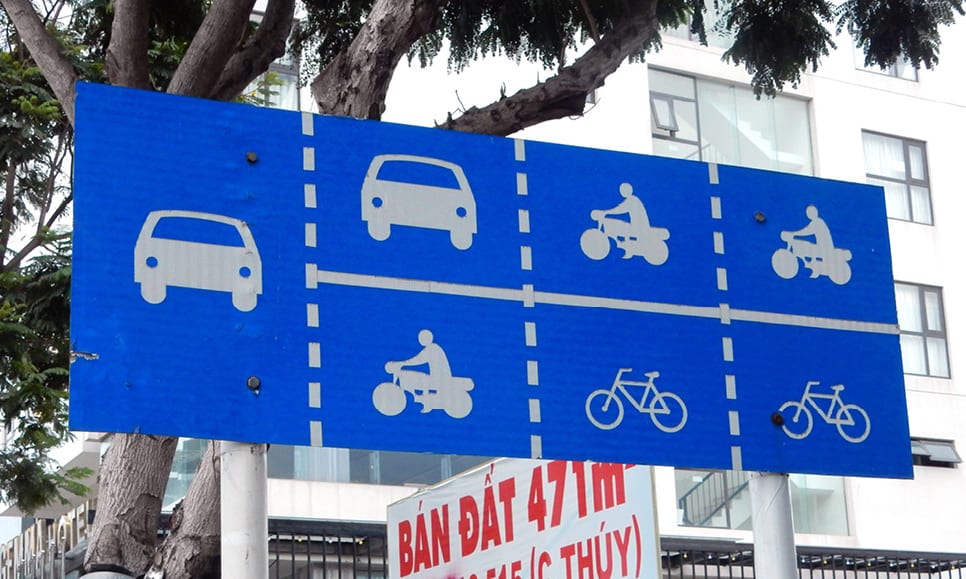 I rented a bike on my first day in DaNang, which cost about $30 for the month. It didn’t have gears or a basket, but was in good condition and did include a small locking cable. I couldn’t find a bicycle rental shop close to my area but many of the scooter rental shops do have some bikes to rent as well, so if you check a couple of those (there are many), you’ll probably eventually find a bicycle to rent without too much trouble. People say it’s safe enough to leave your bike unlocked anywhere, but coming from Phoenix where if you leave your bike unattended for 5 minutes it will probably get stolen – I was pretty diligent about using the lock.
I rented a bike on my first day in DaNang, which cost about $30 for the month. It didn’t have gears or a basket, but was in good condition and did include a small locking cable. I couldn’t find a bicycle rental shop close to my area but many of the scooter rental shops do have some bikes to rent as well, so if you check a couple of those (there are many), you’ll probably eventually find a bicycle to rent without too much trouble. People say it’s safe enough to leave your bike unlocked anywhere, but coming from Phoenix where if you leave your bike unattended for 5 minutes it will probably get stolen – I was pretty diligent about using the lock.
Biking in the city took a little time to get accustomed to initially. When riding a bike in DaNang, as daunting as it might initially sound, the best thing to do is just ride with the other vehicles (cars and scooters) on the roads. Many of the larger streets have intersections that are basically giant round-a-points, some with up to 5-6 lanes in each direction, some with traffic lights controlling which sides of the round-a-point are permitted to enter. The trick to crossing round-a-points is to position yourself in the correct lane before you enter the intersection. So, if you’re going straight through the round-a-point, you want to be in one of the middle lanes.
As a general rule, the left couple lanes are for larger vehicles such as cars and buses while the right couple lanes are for bikes. Except for when making a turn. Scooters are everywhere, with the faster vehicles weaving through traffic to get around the slower ones. Lane divisions are a loose suggestion though – drivers cross them frequently without warning. So, just be aware of your surroundings, use common sense, expect anything and you’ll be fine!
Uniforms of Security
You’ll see security in Vietnam wearing uniforms of many different colors, indicating their role. The three most common are tan, blue and green. Tan is for the traffic police, blue is for building security, and green is the general police.
Heat and Sun
I arrived at the beginning of summer, with highs easily reaching 40°C (105°F) and harsh sunny blue skies most days. It was a little unbearable to be outside from 11am until the sun went down, but so perfect at night once the worst of the daytime heat diminished!
Most local people (especially when riding scooters) very smartly cover up from head to toe in light long sleeve shirts and pants, sometimes with their faces wrapped in scarves. Women also have wide pieces of cloth which they’ll wrap around their legs like skirts when riding a scooter. One of the big ways you can easily distinguish the tourists apart from the locals is by the amount of skin we leave exposed to the sun while outside. It seemed very out of place at first to see so many people wearing what looks like light autumn jackets when it’s so hot out but is actually quite practical to avoid sunburn living in a place like this.
Food
I found a much broader range of food here than in the previous couple cities, including bread (mostly light French rolls) as a regular part of some of the local cuisine – a leftover influence of European occupation. There were also a handful of more western food restaurants in the tourist areas that served things such as pizza, burgers, spaghetti, German and Indian food (none of which I tried, because I wanted to take advantage of being here to eat as much Asian food as possible!). I was also able to find cheese, oatmeal, and Kellogg muesli cereal in the small grocery store down the street. Restaurant dining here is extremely affordable, ranging for $1.25 for a simple (but tasty!) bowl of noodle soup, to $5.50 for higher end restaurant meals. Food was generally made fresh, served quickly, and had a very attentive staff in all the places I visited.
I had no digestive issues with anything I ate from either street vendors or restaurants. One of my expat friends did have some food poisoning problems (and missed a handful of days of training on account of it) from eating a specialty called “balut”, which is basically a partially developed duck embryo served inside the shell of the boiled egg. But, I think we can all agree that’s a fairly questionable food choice to begin with. I realize that trying all the food specialties is part of the cultural experience of visiting a new country, but that one was just way beyond the scope of the new things I was willing to try!
River and Bridges
Through the center of DaNang runs a river, crossed by a handful of bridges, illuminated at night. The most unique and memorable is of course the golden dragon bridge, though there’s a very nice cable bridge to the south as well. The ends of both bridges connect to a large sidewalk that runs along the river in either direction, with tons of vendors and restaurants in the area. A smaller pedestrian-only bridge runs parallel to the southern cable bridge entirely crossing the river, offering a nice view of the cityscape with the dragon bridge in the distance. All the bridges are illuminated with lights of changing colors at night, which is really quite beautiful, and the area just east of the dragon bridge actually becomes a giant night market in the evenings.
Supposedly, the dragon blows fire and water for about 15 minutes starting at 9pm punctually every Saturday and Sunday. Toward the end of my stay, I biked down there to try to see it in person. That Saturday night, it was exceptionally packed with people, making for a very lively (if slightly chaotic) atmosphere. Turns out, instead of the usual dragon fire water show, there was a fireworks over the river that evening! Which was still pretty spectacular, though I didn’t get to see the dragon blowing fire.
The Beach!
My studio was located just a 10 minute walk to the beach, which was the first time I’d ever lived close to the ocean! I spent many nice evenings walking barefoot along the waterline at sunset. The entire eastern side of DaNang is made up of kilometer after kilometer of beautiful sandy coastline. Certain areas are more specifically designated for swimming, with lifeguards keeping an eye on things. These areas get a little busy on weekends. Other areas have “no swimming” signs. I’m not sure why, as the beach there seems as good a place to swim as any other, except for perhaps the lack of lifeguard supervision. The ocean is bathwater warm, with very soft fine sand and the occasional shell or tiny transparent white crab.
One thing to note – Vietnamese swimwear for women is much more modest than the European/American version, and usually consists of tank top or t-shirt over shorts. I did see a handful of women wearing single and two piece swimsuits (usually obviously tourists) so I don’t think anyone would specifically care or be offended you went ahead and wore those on the beach – you might just stand out a bit more. Following my general “do as the locals” policy and disliking extra attention, I went ahead and wore shorts and t-shirt myself.
Fishing on the Beach
One evening, while walking along the beach, I came across a group of 8 people on the shore pulling in a giant fishing net shaped like a “U”, with the ends on the beach and the middle far out in the ocean. The people wore thick belts, similar to what weightlifters sometimes wear not to strain their lower backs, which they’d hook into the thick rope of the net. Every time a person got far up enough on the beach, they’d unhook their belt, wade out into the water at the front of the line, hook onto the net rope again and keep pulling. This went on for about ½ hour, with more and more random people jumping in to help pull, until there was a big crowd helping the original 8 people! The center of the net was filled with fish.
Chùa Linh Ứng – Pagoda and Lady Buddha on the Hill
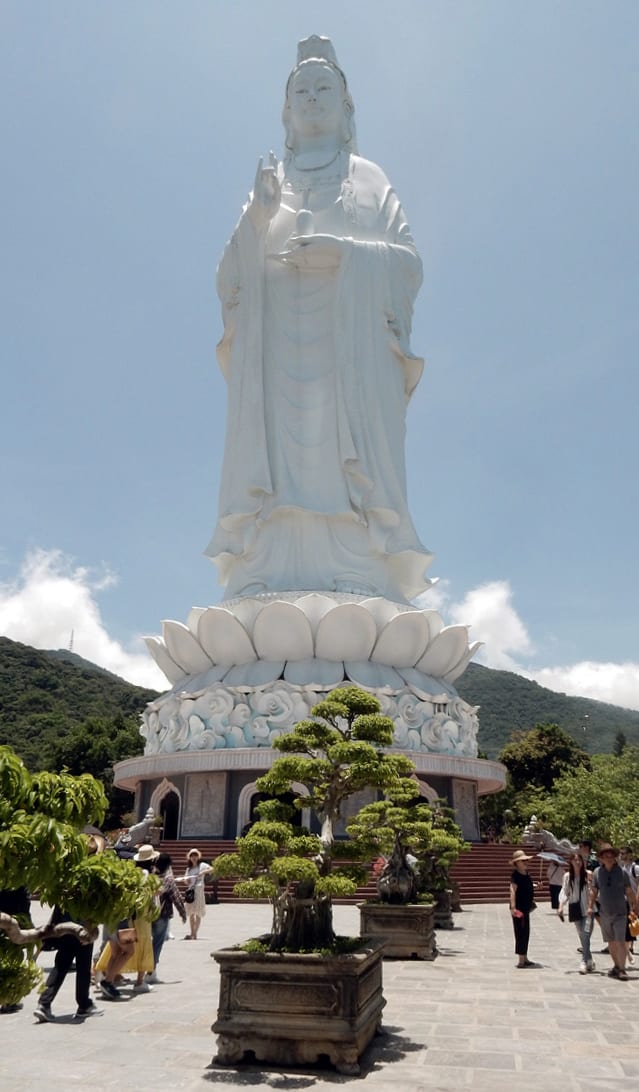 This area, located on a hill to the North of the city, consists of a GIANT lady Buddha statue, a very tall pagoda, and a handful of Buddhist temples surrounded by open spaces for walking filled with tiny trees in pots and sculptures, with really nice views of the ocean and the city in the distance.
This area, located on a hill to the North of the city, consists of a GIANT lady Buddha statue, a very tall pagoda, and a handful of Buddhist temples surrounded by open spaces for walking filled with tiny trees in pots and sculptures, with really nice views of the ocean and the city in the distance.
Getting here takes about 15 minutes from the city center. It’s in the hills away from the main city. I took a Grab scooter taxi here, which cost about $2.00. The road is wide and in great condition – it would be an easy drive up for anyone with a scooter, even with very little riding experience. One word of warning if you take a Grab taxis here – depending on how long you plan to stay, you might consider paying for the driver’s time to wait while you visit then take you back down to the city. I didn’t do this, and wasn’t able to call a Grab taxi for the return trip since there simply weren’t any drivers in the nearby vicinity. Fortunately, there are plenty of (non Grab) car taxis for the return trip, those just cost a bit more than scooter taxis (though are still very cheap).
Being the middle of the summer and the middle of the day, it was extremely hot and sunny out, which I’d smartly planned for with plenty of sunscreen and bottled water. There’s a handful of vendors at the top selling water, coconuts and snacks as well, in case you run out.
To my great surprise and delight, while wandering through one of the more empty paths in the area, I had the opportunity to see a handful of monkeys! There were about 5 sitting about and climbing statues and trees for about 10 minutes before casually strolling off into the jungle on the other side of the path.
I visited on a Thursday. While there were other tourists around, the space was big enough with few enough visitors that it wasn’t uncomfortably packed. A couple hours would be plenty of time to see this area, more or less depending on your speed and how frequently you like stop to take photos or just sit and enjoy the view. Do keep in mind that the temples are a holy site, so remember to dress appropriately (pants/skirts extending past knees, no bare shoulders).
Marble Mountains
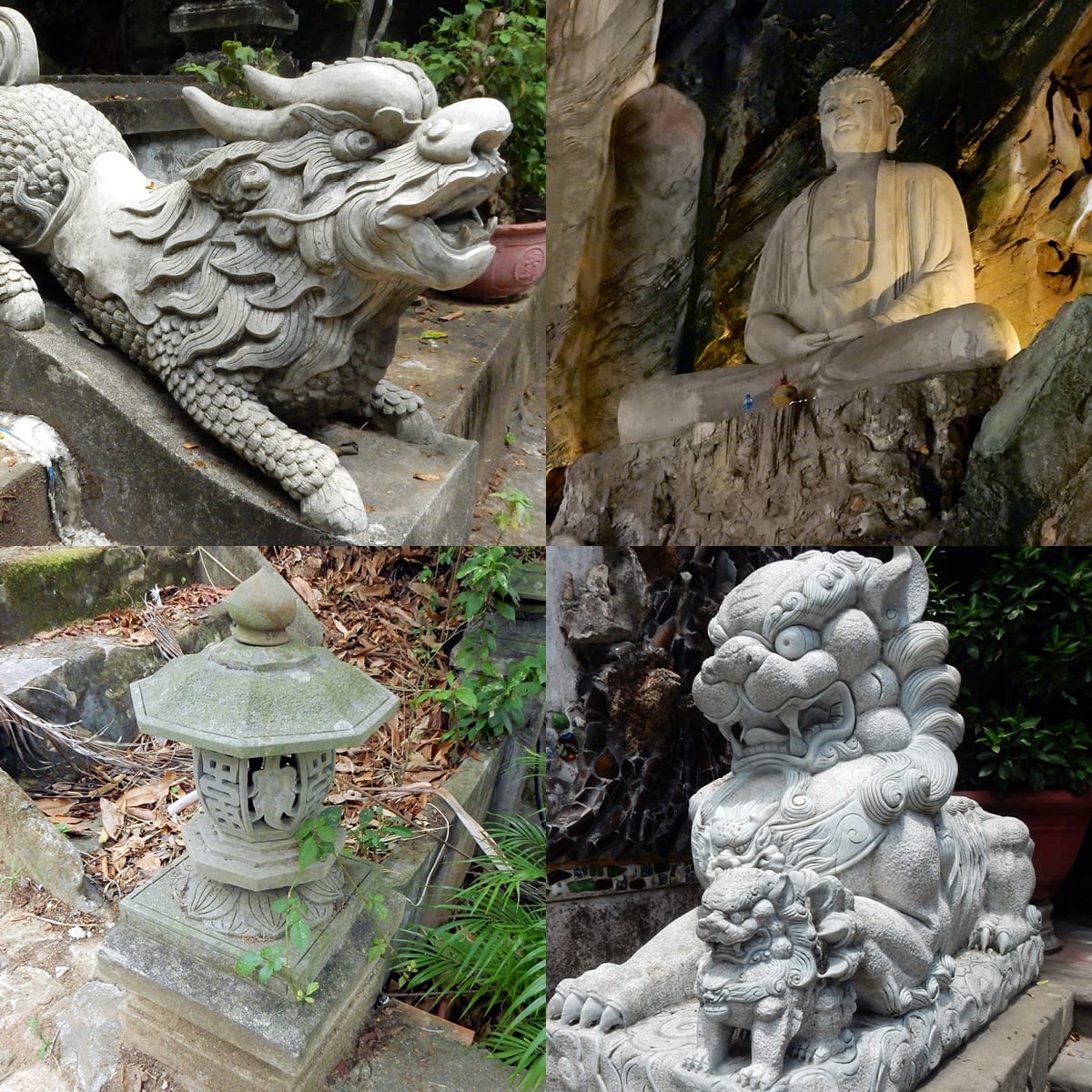 This area consists of a series of limestone hills with little maze-like paths meandering throughout and leading to shallow caves filled with statues, and surrounded by temples, pagodas, and more sculptures. It’s all quite beautiful! One word of caution – there’s a lot of steps and many of them are slippery from stones made smooth from wear, so flip-flops (which I wore) might not be the best choice of footwear. There is an elevator from the base to the top for a fee, for accessibility or just for anyone who doesn’t feel like taking the stairs.
This area consists of a series of limestone hills with little maze-like paths meandering throughout and leading to shallow caves filled with statues, and surrounded by temples, pagodas, and more sculptures. It’s all quite beautiful! One word of caution – there’s a lot of steps and many of them are slippery from stones made smooth from wear, so flip-flops (which I wore) might not be the best choice of footwear. There is an elevator from the base to the top for a fee, for accessibility or just for anyone who doesn’t feel like taking the stairs.
There is an entrance fee of 40,000 VND (about $1.70) to enter the main area, with an additional fee of 30,000 VND to see Am Phu (Heaven and Hell) cave. You can also purchase a map (which includes a handful of postcards!) for an additional 15,000 VND. I did get the map, though the area isn’t all that big and there’s large signs with maps everywhere, so you really don’t need one. Marble Mountains is an easy half day trip. It’s actually located within the city, about 15 minutes away from the city center by scooter.
The area at the base is surrounded by many vendors selling larger sculptures as well as little carved stone figures and animals made of various types of rocks in shapes of Buddhas, elephants, pigs, lotus flowers, and other creatures, if you’re looking for a souvenir. Bargaining seems expected, so feel free to try to negotiate price. There are tons of food vendors around too, if you need a drink or snack. There are also vendors selling traditional Vietnamese conical hats, which I absolutely love – they’re comfortable, lightweight, and cast a very large shadow covering neck, ears and face, offering significantly more sun protection than a baseball cap. Which is very important in this sunny city for people who are sensitive to sunburns. Further away from the base of the mountains are many shops that make/sell larger white marble sculptures. These are presumably for use in other temples as they’re much too big for anyone to bring home as souvenirs.
Marble Mountains: Am Phu (Heaven and Hell) Cave
 Am Phu is one of the largest of the Marble Mountains’ caves and, as its name implies, symbolizes Buddhist heaven and hell. To enter, you first cross a little bridge with water on both sides containing some sculptures of hands reaching up out of the water like those of drowning people. Inside the cave are a handful of really impressive high-ceiling limestone chambers. It’s dimly lit, filled with intricate sculptures illuminated with colorful light, with the scent of sweet incense in the air and some low Vietnamese music in the background.
Am Phu is one of the largest of the Marble Mountains’ caves and, as its name implies, symbolizes Buddhist heaven and hell. To enter, you first cross a little bridge with water on both sides containing some sculptures of hands reaching up out of the water like those of drowning people. Inside the cave are a handful of really impressive high-ceiling limestone chambers. It’s dimly lit, filled with intricate sculptures illuminated with colorful light, with the scent of sweet incense in the air and some low Vietnamese music in the background.
From the main chamber there are two possible paths to take – one a steep stairway that eventually leads to a little outdoor balcony, symbolizing the challenging climb to heaven. The other leading down to more caverns symbolizing hell, with statue of Ksitigarbha Bodhisattva (often associated with Buddhist hell) at the center. According to the internet, there’s supposed to be a bunch of creepy/disturbing statues of figures being tortured but I didn’t actually see any of these around so, it’s possible they were removed on account of being too disturbing for the tourists. There were a couple demon sculptures, and a scale (to metaphorically weight the good and bad actions of your life) though.
Hoi An
On one of the last days of my stay, I took a half day trip down to Hoi An, a small ancient harbor town to the South of DaNang about 30 minutes away by taxi. I took a Grab scooter taxi here, which cost about 95,000 VND (about $4) one way. I was also told that there is some kind of bus/shuttle that runs between the two regularly that’s a good cheap way to get between the cities, but I didn’t look into this myself.
Upon arrival, I first took a detour to eat at Rosie’s Cafe, recommended by a friend. It was located a bit North of the ancient city so in a less touristy part of town. Rosie’s Cafe was a pleasant little restaurant that could easily have been found anywhere in downtown Phoenix for the menu and granola-chill ambiance. I had the avocado toast which was delicious and came in a very generous portion for a very reasonable price. After having eating primarily Asian food for the previous couple months, it was refreshing to eat something so typically found back home. The menu is vegetarian/vegan friendly, and also environmentally conscious with things like reusable bamboo straws instead of disposable plastic ones.
I then headed towards the “Japanese covered bridge” and wandered around the old city center for awhile, which was EXTREMELY crowded with tourists. There were vendors selling food, clothes, souvenirs and tours everywhere. There seemed to be an entrance fee to go inside the Japanese bridge, but it was so packed full with people that I decided against it. It would be hypocritical to complain, being a tourist myself, but Hoi An (at least the city center) certainly lacks the peace, calm, and authenticity of DaNang. Hordes of tourists make walking around some areas (like crossing the bridges) difficult due to the sheer number of people walking across or simply stopped in the middle of the bridge taking photos. That being said, the old city center was quite beautiful, with strings of colorful lanterns hanging over tiny, pedestrian-only streets lined with pastel colored buildings of a more European style. I couldn’t really tell which of the buildings are genuinely old, and which are just crafted to look like ancient buildings.
Hoi An does have a really great selection of restaurants and street vendor selling foods/snacks, and many cute cafes. Many of the restaurants offer cooking classes teaching tourists how to prepare traditional meals which I didn’t participate in due to time, but which sounded like a fun idea.
Hoi An is also known for its silk trade and tailors. There are multiple shops selling clothes pre-made, ranging in style from baggy elephant print pants and light sundresses to business suits and more formal attire. If you have the time and money (I have no idea what something like that would cost or how long it might take to make), you can also have your measurements taken at a shop so that they can make a piece of clothing exact to your specifications and style requirements!
More Veggies Now
One word of warning if wandering off the tourist path, which I suppose holds true in any country… you might see some things which are somewhat disturbing to American sensibilities, or animal-compassionate people. While walking through a market away from the tourist area one day, I came across a vendor selling (living) white duck. There were about 12 of the animals not in cages, but rather with their legs and wings bound tightly behind them with ropes so they weren’t able to move, many of them quacking in obvious pain and distress.
Without going into the vegetarian/vegan diet debate, I’ll just say that this sight actually renewed my commitment to a vegetarian diet, which I’d gotten fairly lazy about lately in the excitement of trying new foods in foreign countries. But, I cannot in good conscience continue to consume a food whose production so clearly causes pain and distress to another living creature. I certainly don’t believe Vietnam in any worse in this regard than any other country – it’s simply that here you’re occasionally confronted with the reality of meat production in plain sight, rather than having it hidden away where you can more easily and conveniently ignore it. I debated whether or not to even write about this, but feel it’s important to present a realistic and complete picture of a place as I experience it, rather than glossing over the more unpleasant aspects.
Fortunately, it’s extremely easy to eat vegetarian/vegan in DaNang – a quick Google search revealed 6 specifically vegetarian/vegan restaurants within a 20 minute walk from my studio. One of which I’d already been visiting regularly in the previous month, simply because they had great food. These do tend to be higher end restaurants, meaning you can expect to pay $3-5 instead of $1-3 for a meal.
Training
My home gym for the month was MMA Fighter Club, located on the 3rd floor of a building near the dragon bridge. Training regularly was a little more difficult this month as this was the only gym that offers BJJ classes in DaNang and it turned out to be much further away from my apartment than I realized, eating up a significant amount of bicycle commuting time getting there and back.
BJJ classes are held a couple times a day all days except Sunday, both gi and nogi. The class sizes were relatively small, ranging from just a couple students to maybe 10-12, with a larger percentage of lower belts, and travelers passing through DaNang dropping in periodically. Evening and morning classes are taught by black belt Reynold Garcia, and mid-day nogi classes are taught by blue belt Jeff Corra. It was Jeff’s mid-day nogi classes which I attended 3x per week.
Jeff and the other students were easy going and welcoming – I felt instantly at home training with this group. Jeff is an expat himself but had already been living in DaNang for a couple years, so was a great source of information for any questions I had about DaNang. Classes were straightforward and clear, with technique building off of previous techniques learned, branching off to show related variations, counters and defenses in a logical progression.
In addition to BJJ classes, the gym offered MMA classes throughout the day. The gym includes a good set of weightlifting equipment and with a boxing ring with punching bags along two of the walls.
Weightlifting at Bina Gym
Training BJJ only 3x a week instead of the usual 5-6, I needed to find another physical activity to fill some days, and ended up weight lifting at Bina gym near my studio some days. It didn’t have AC but did include a nice set of basic equipment and weights, so that was great. It also only cost 30,000 VND ($1.25) for a single time drop in! One interesting thing about weightlifting gyms here – they’re carpeted, and all the local people work out barefoot. You could easily tell who the tourists and expats are were just by looking at their feet! I wore shoes and socks the couple times, before just going barefoot myself as well.

